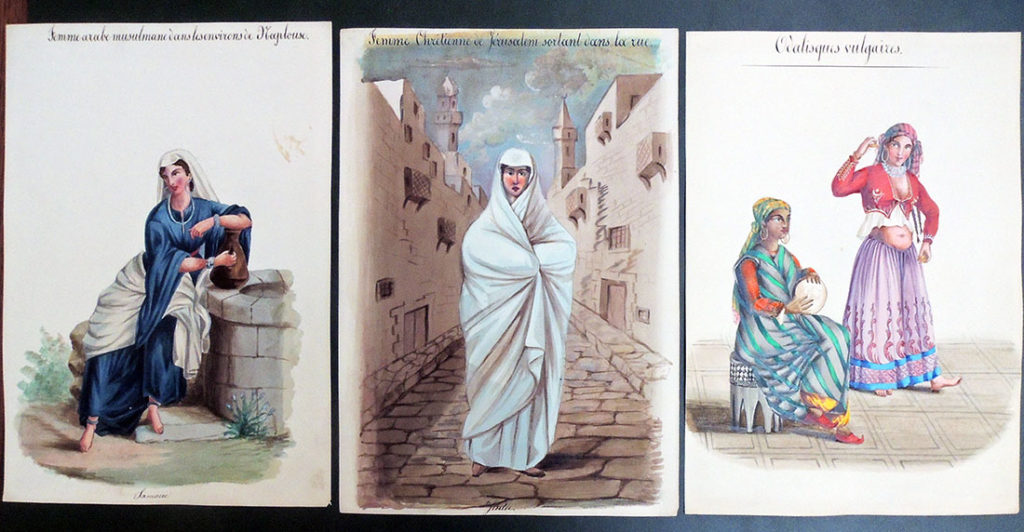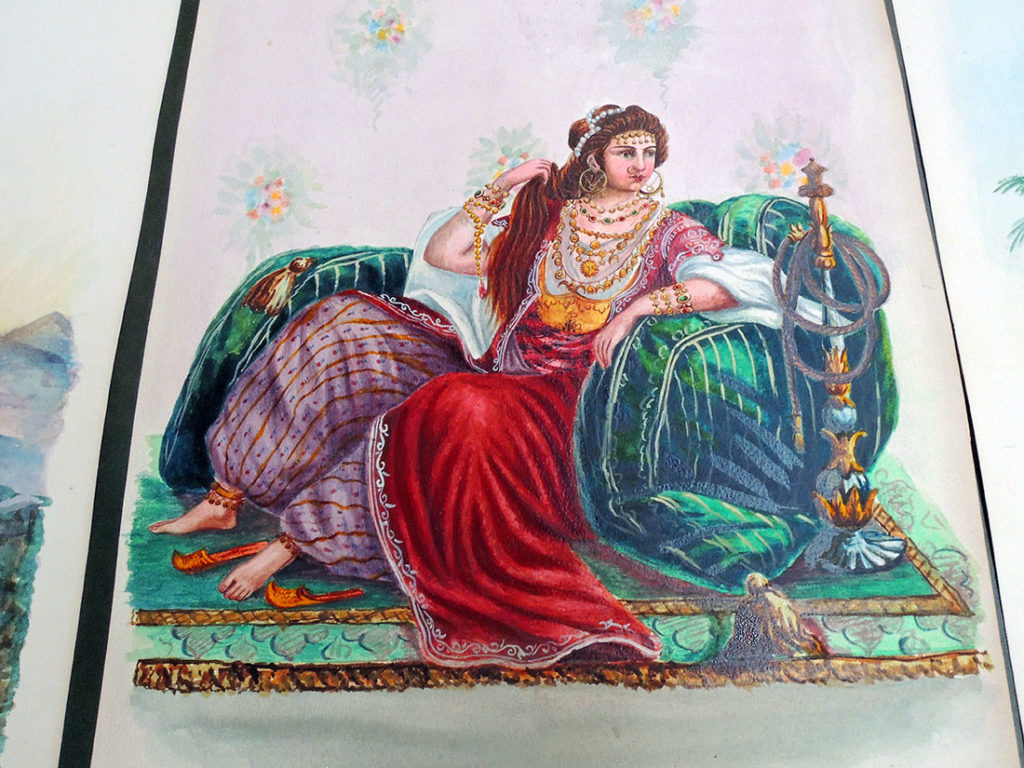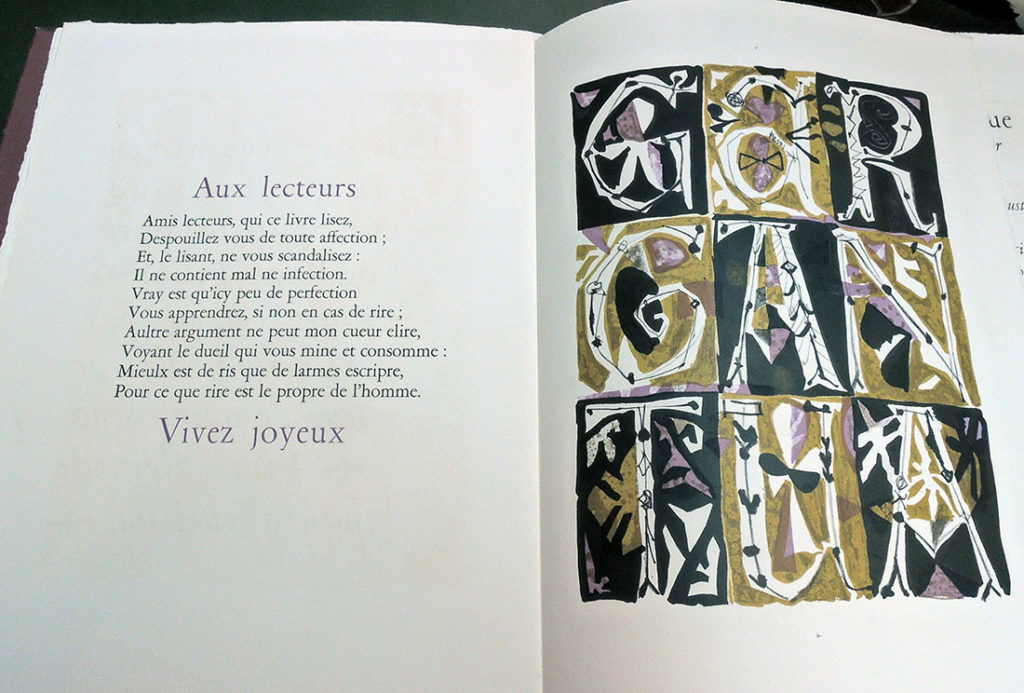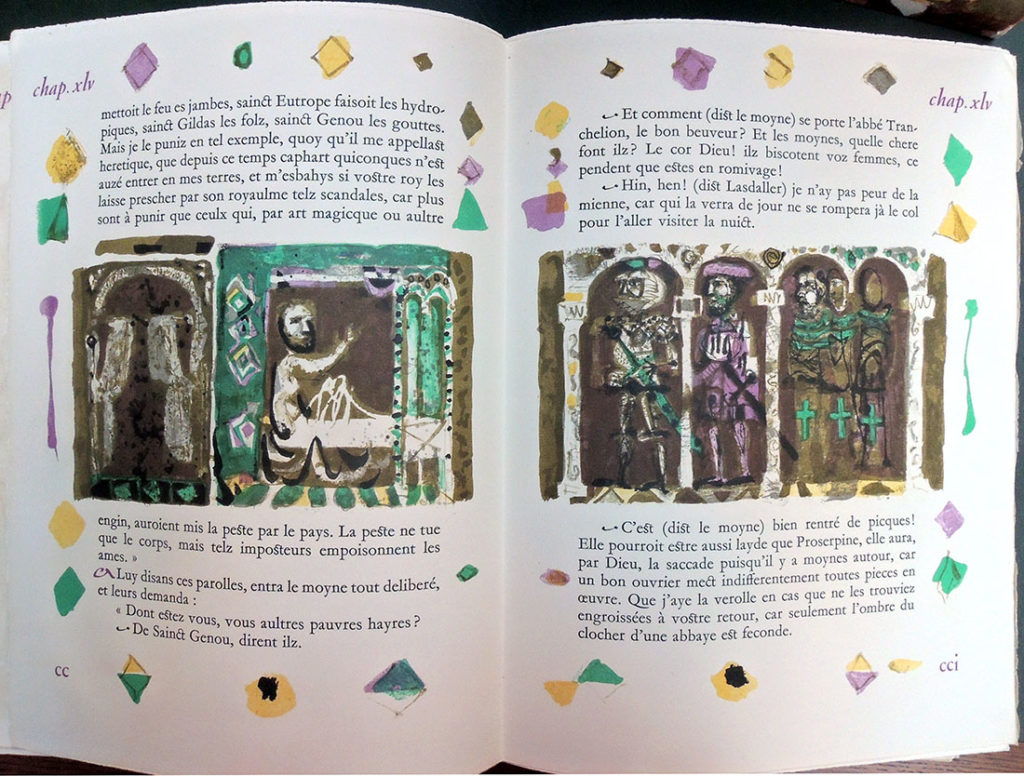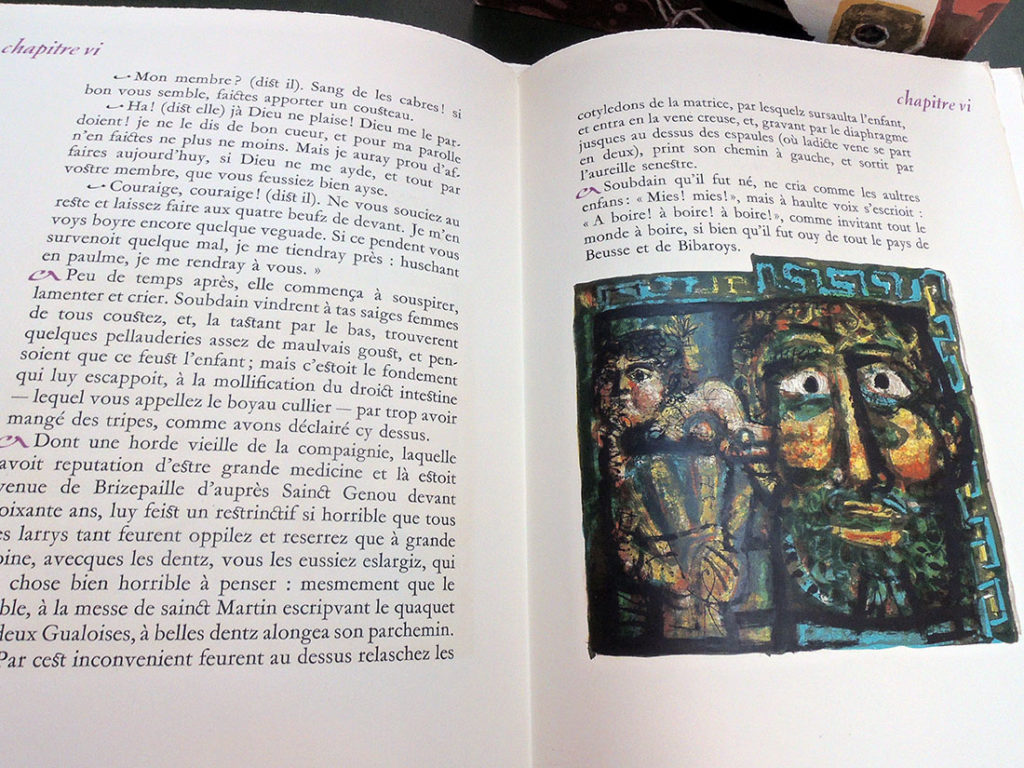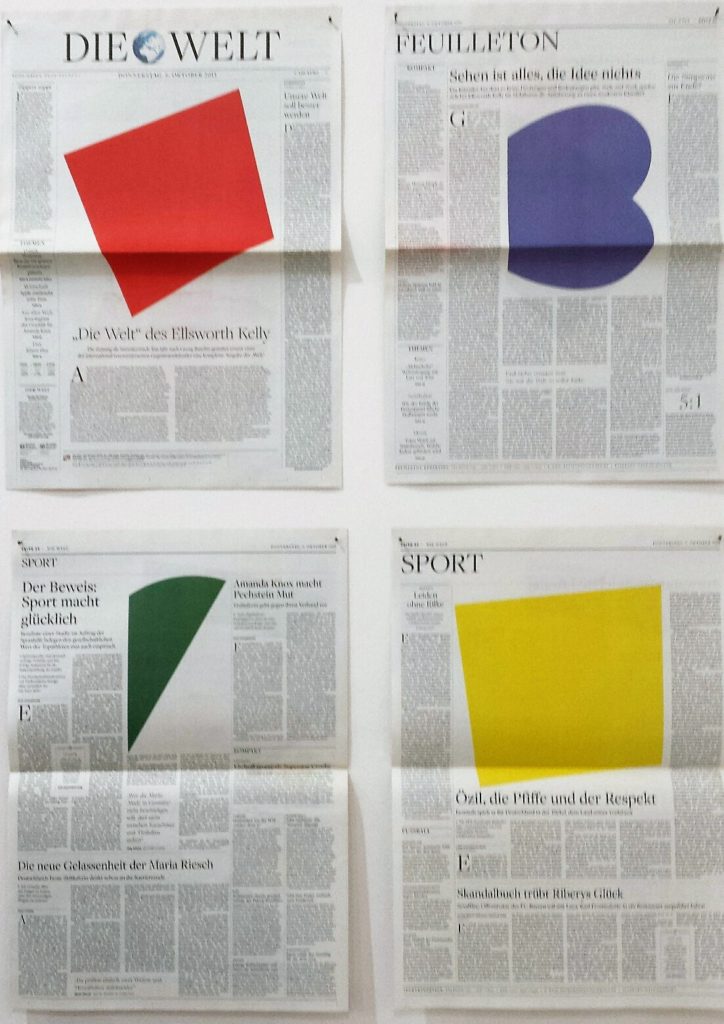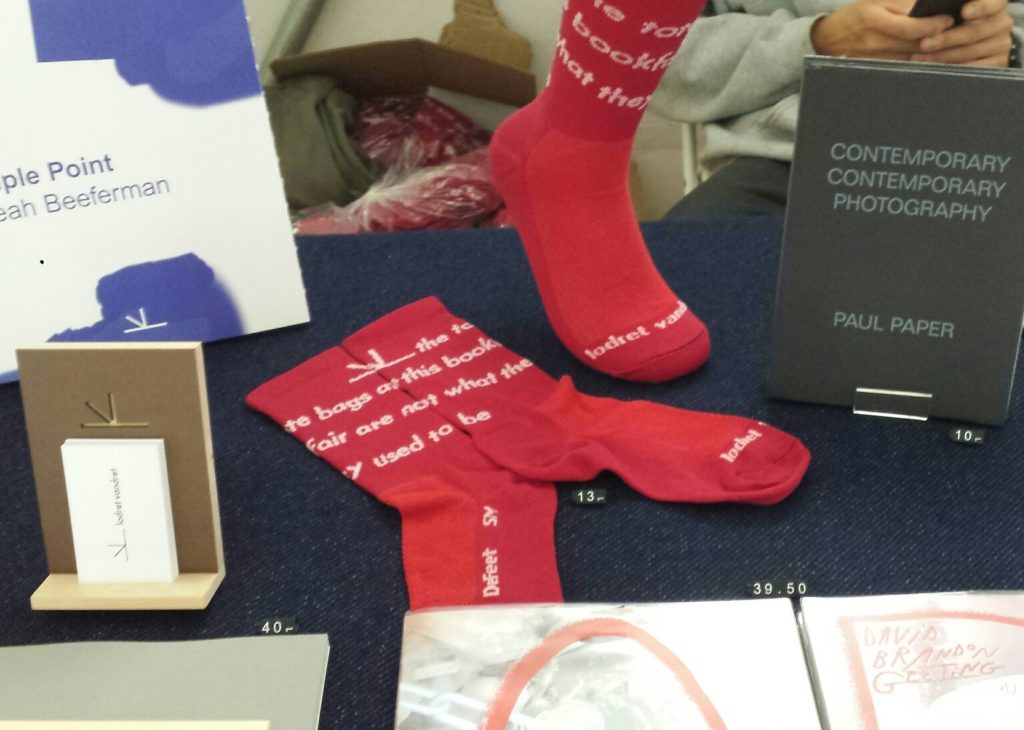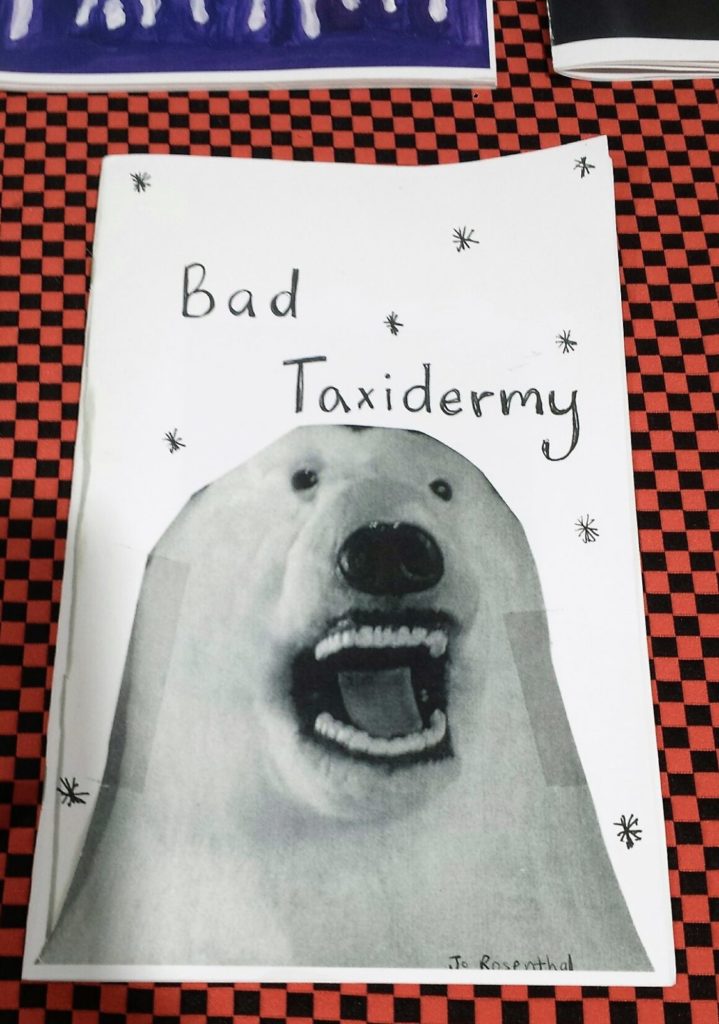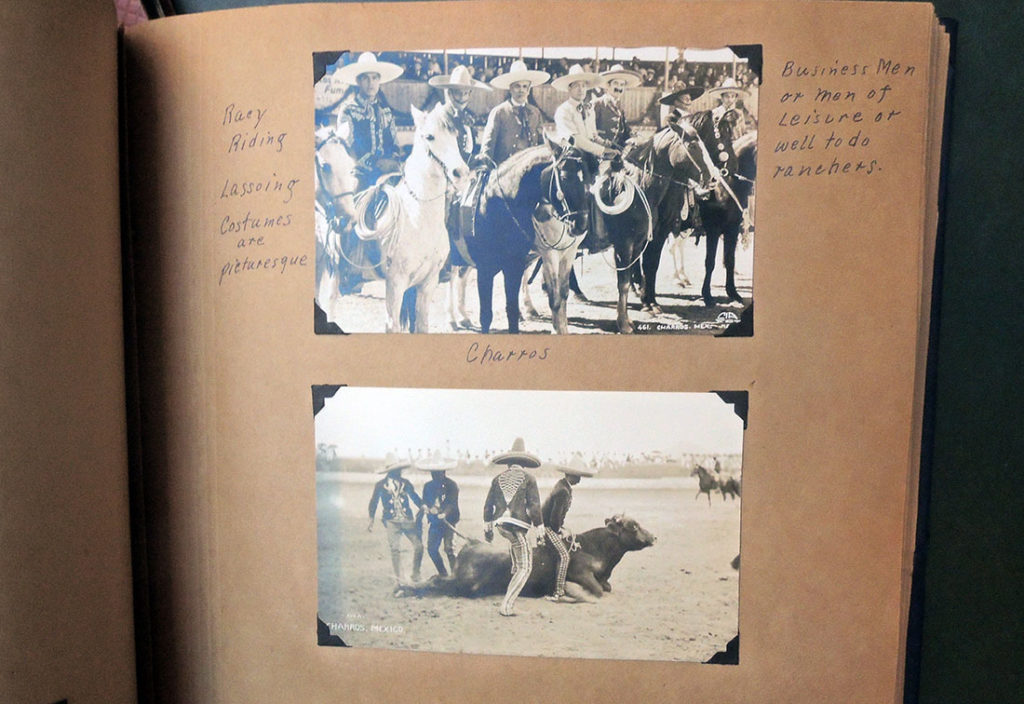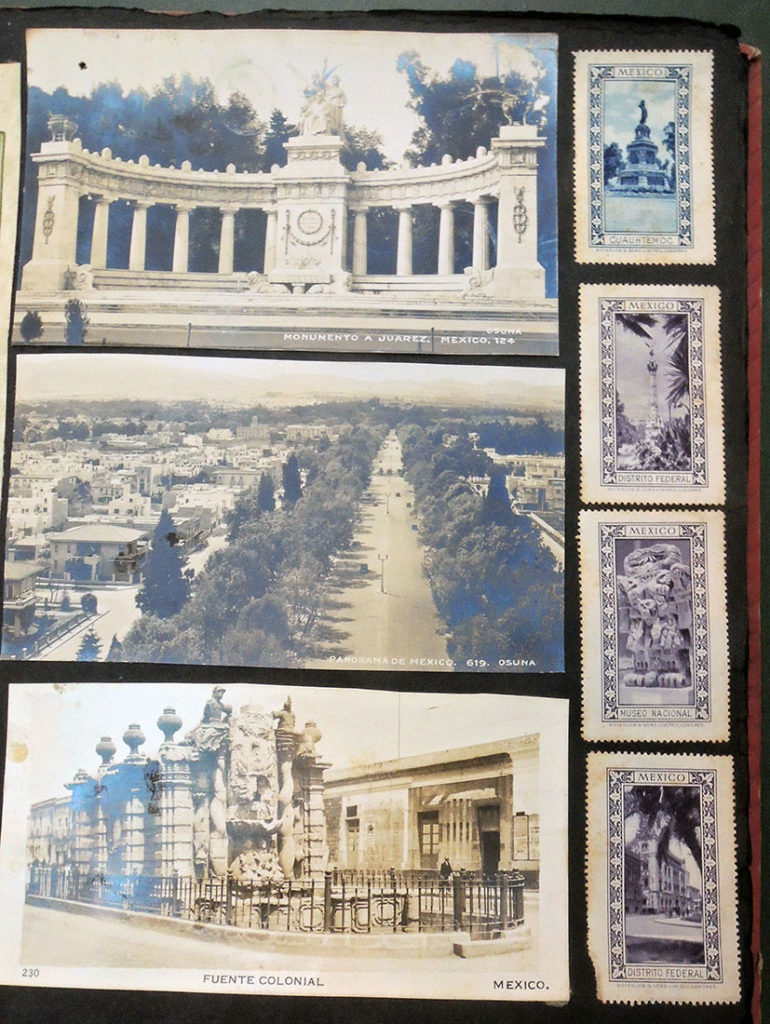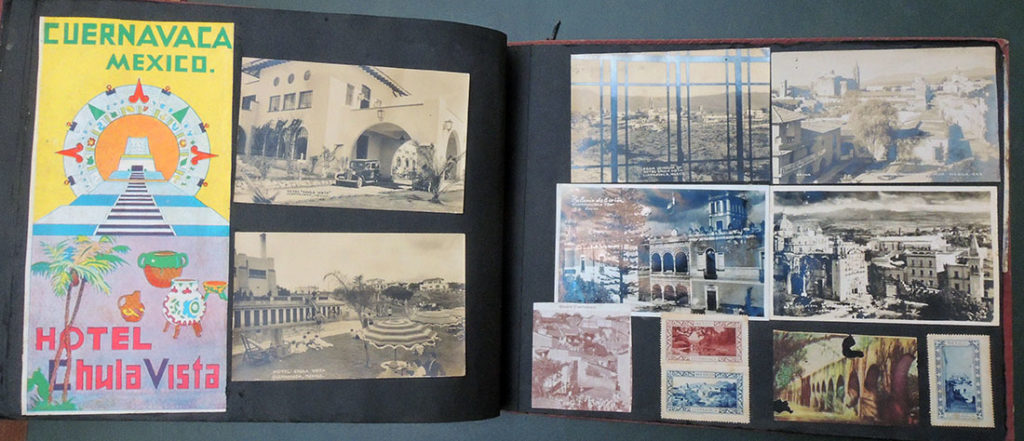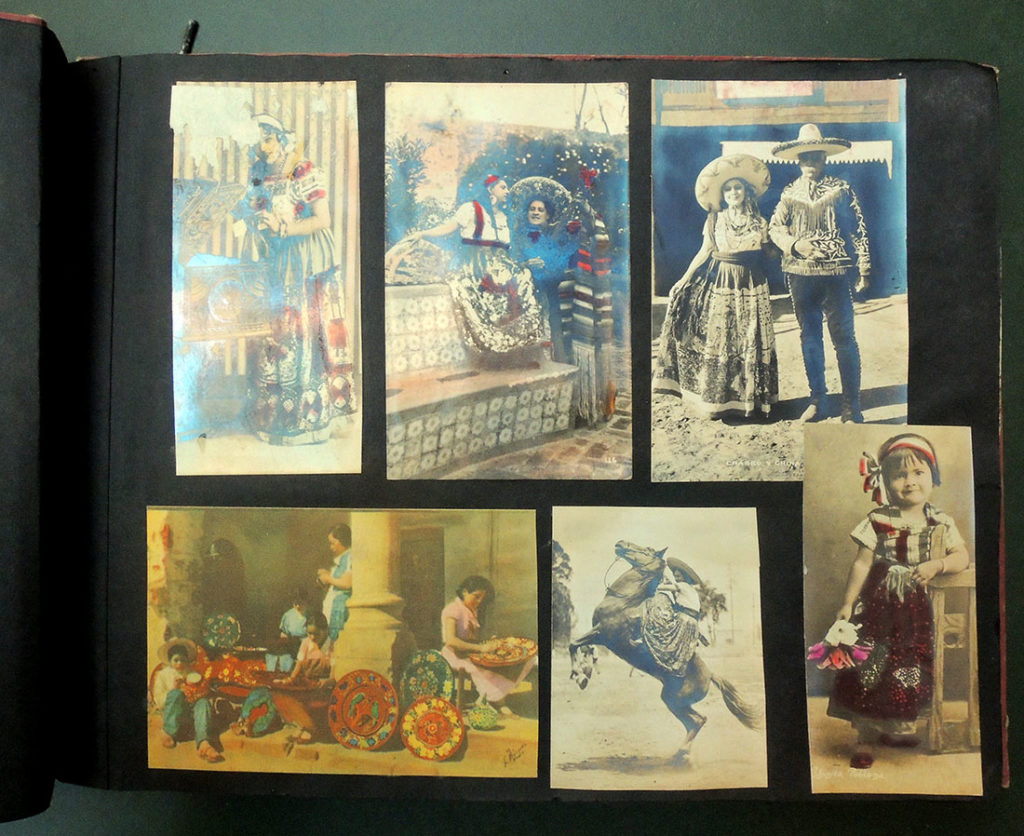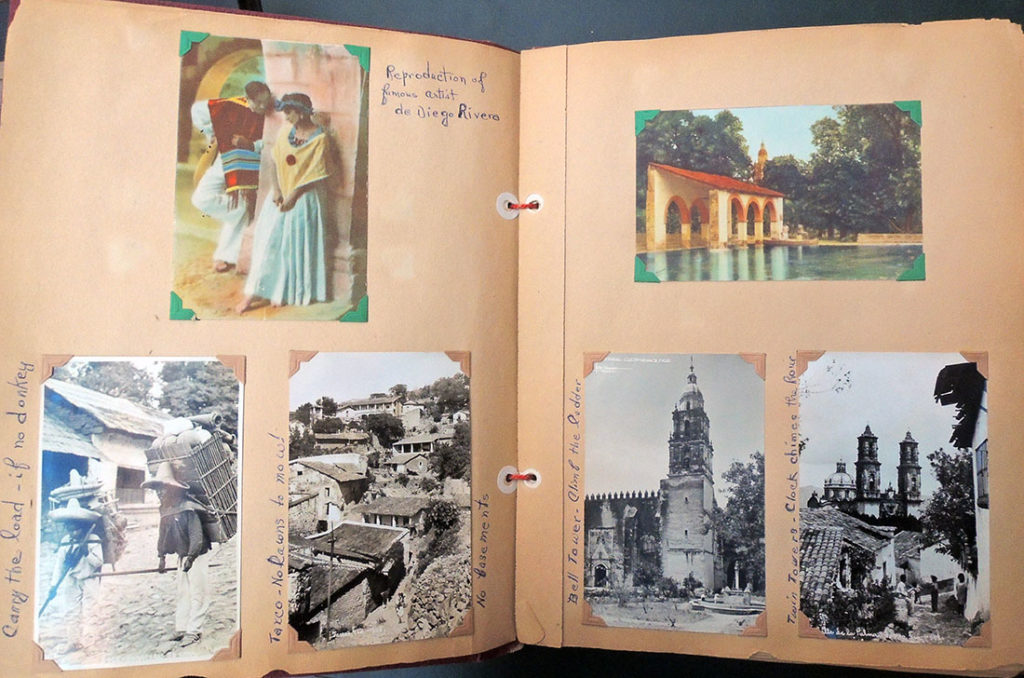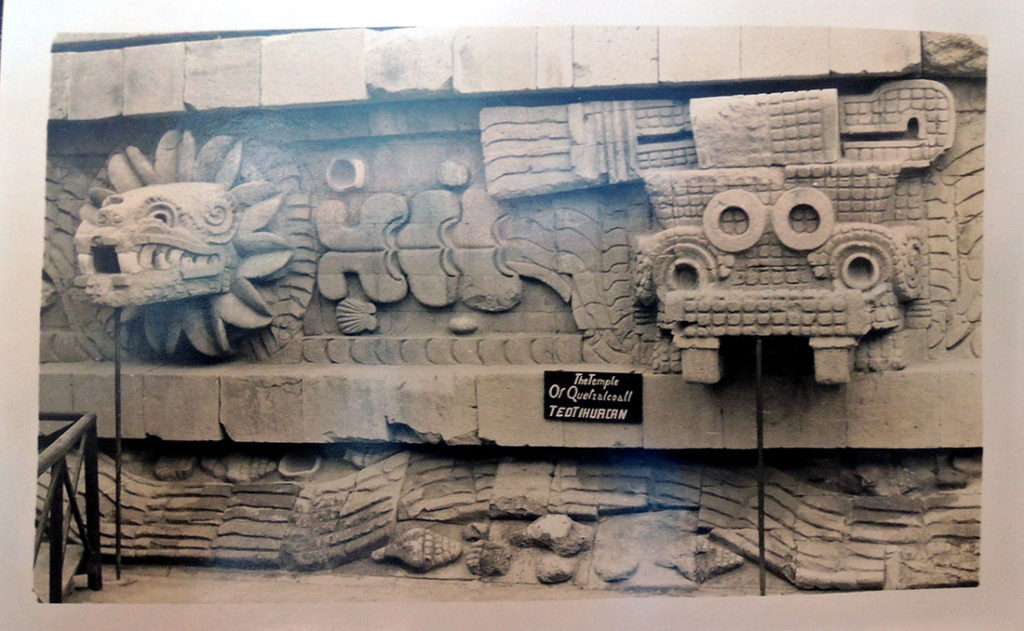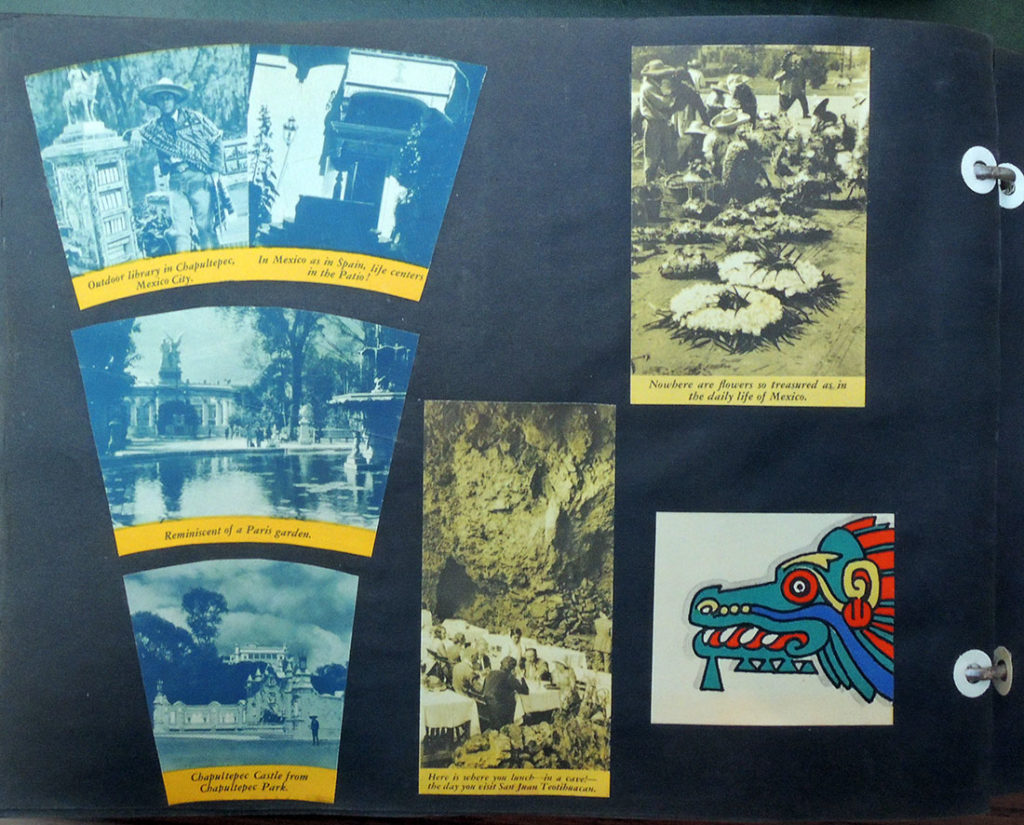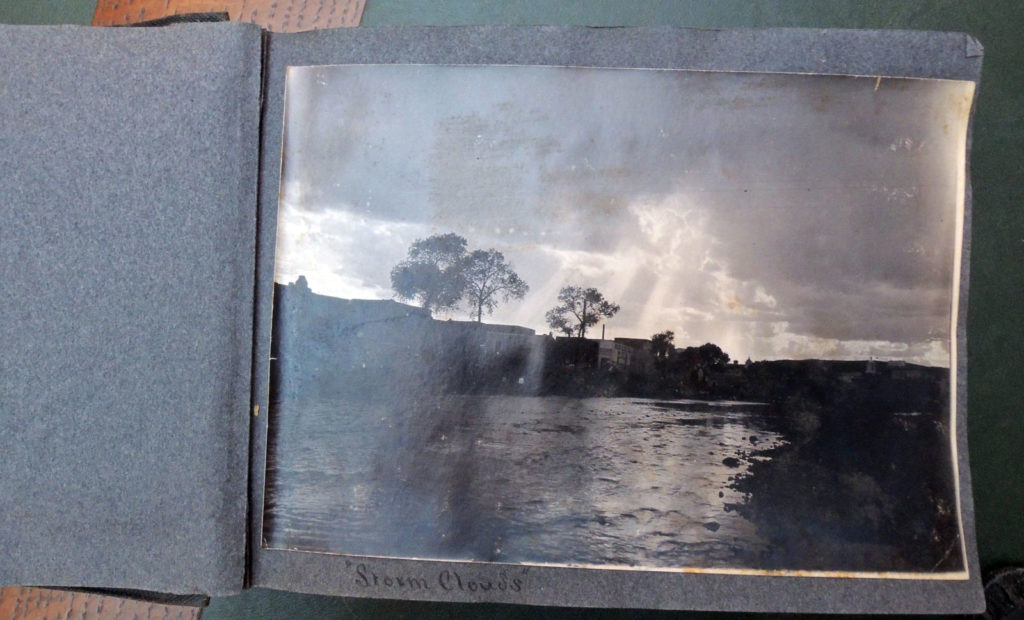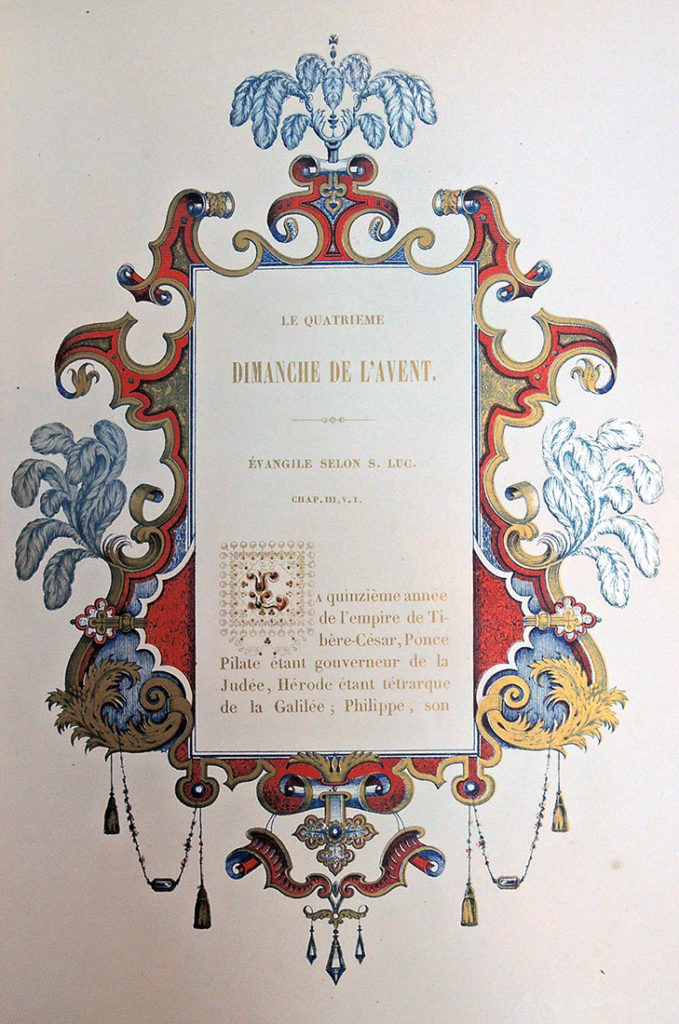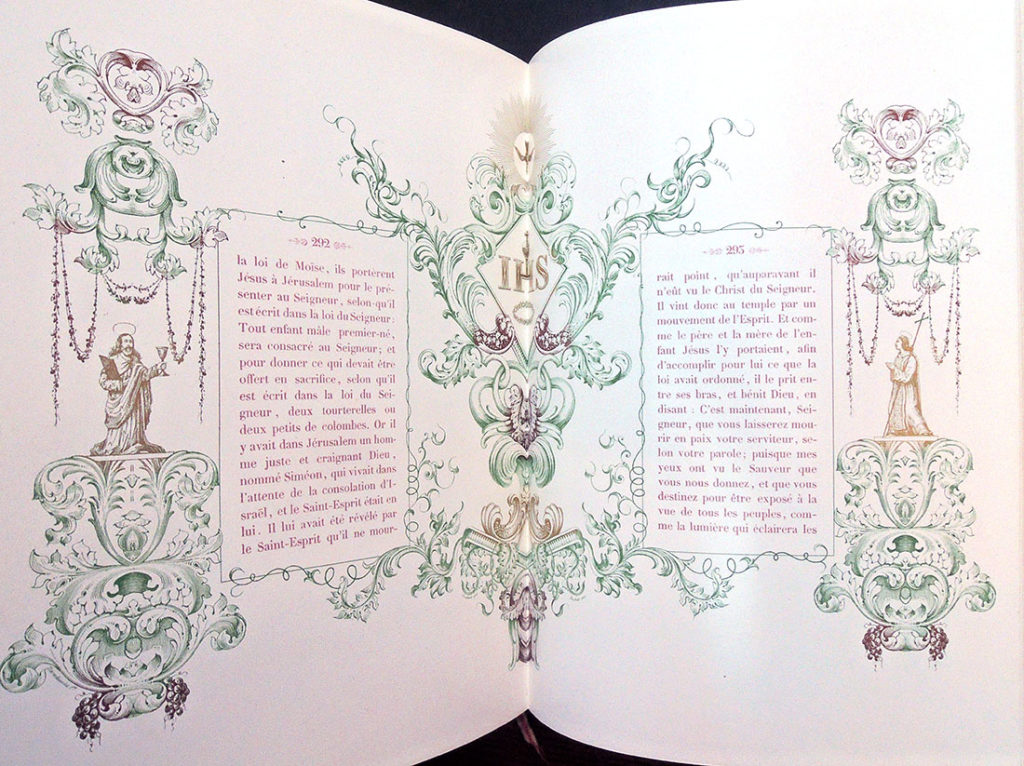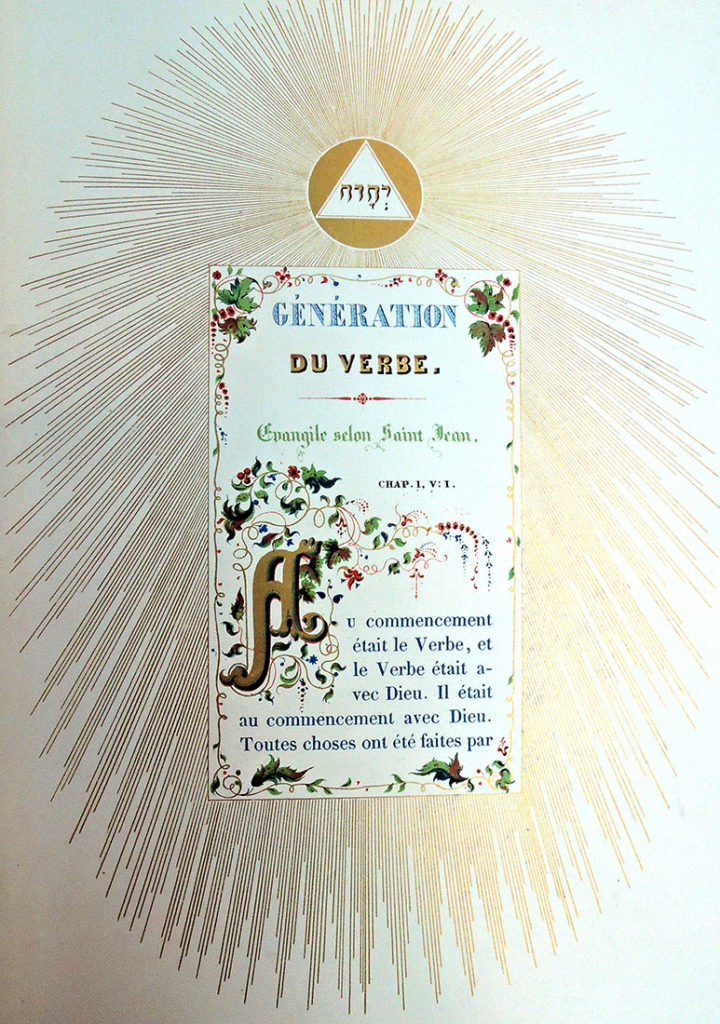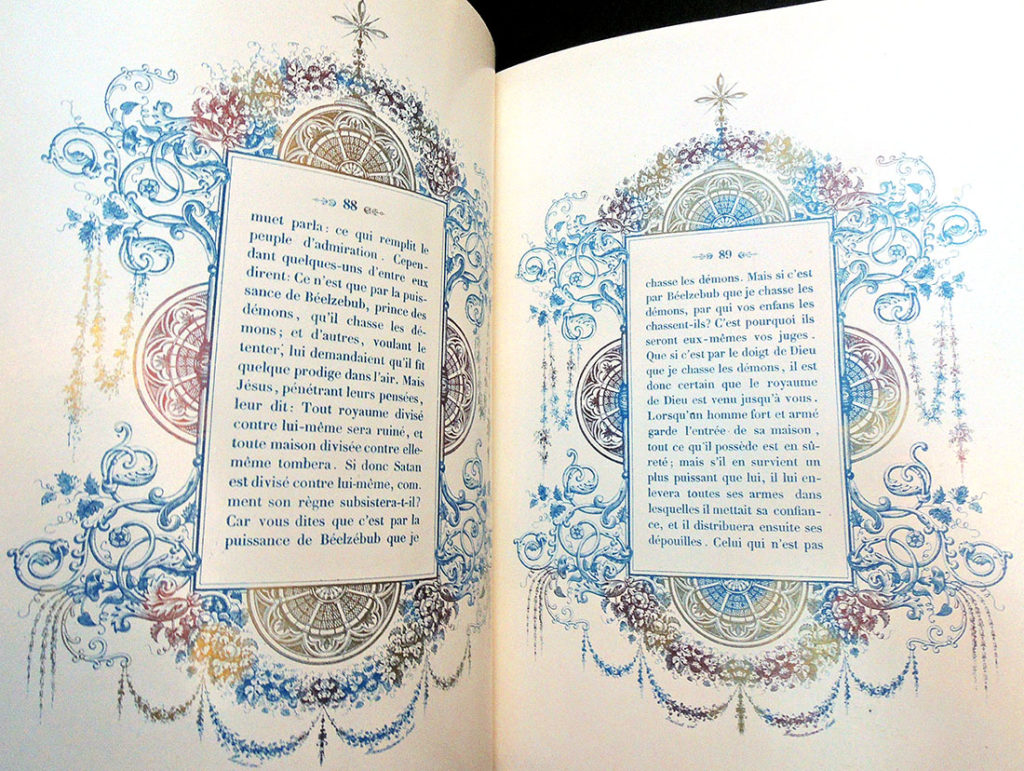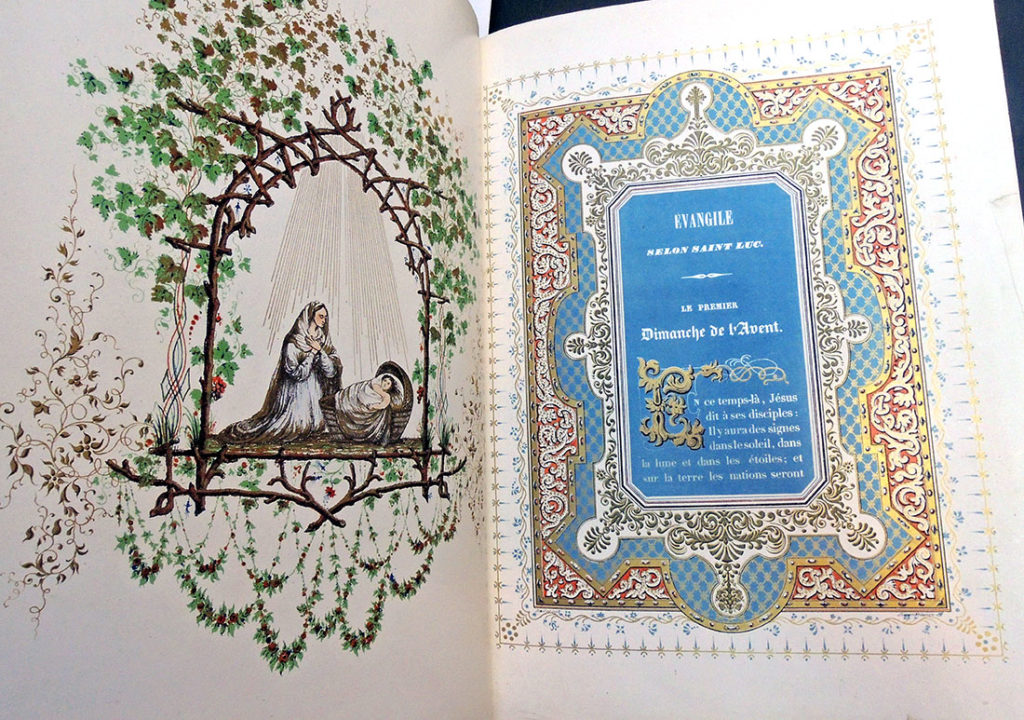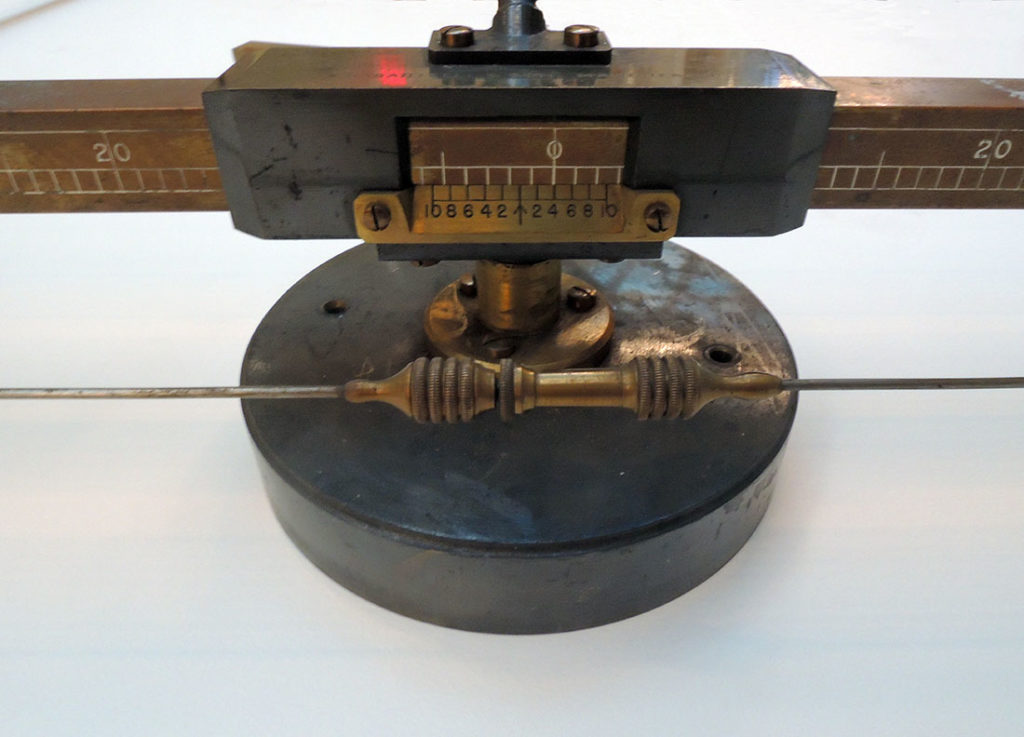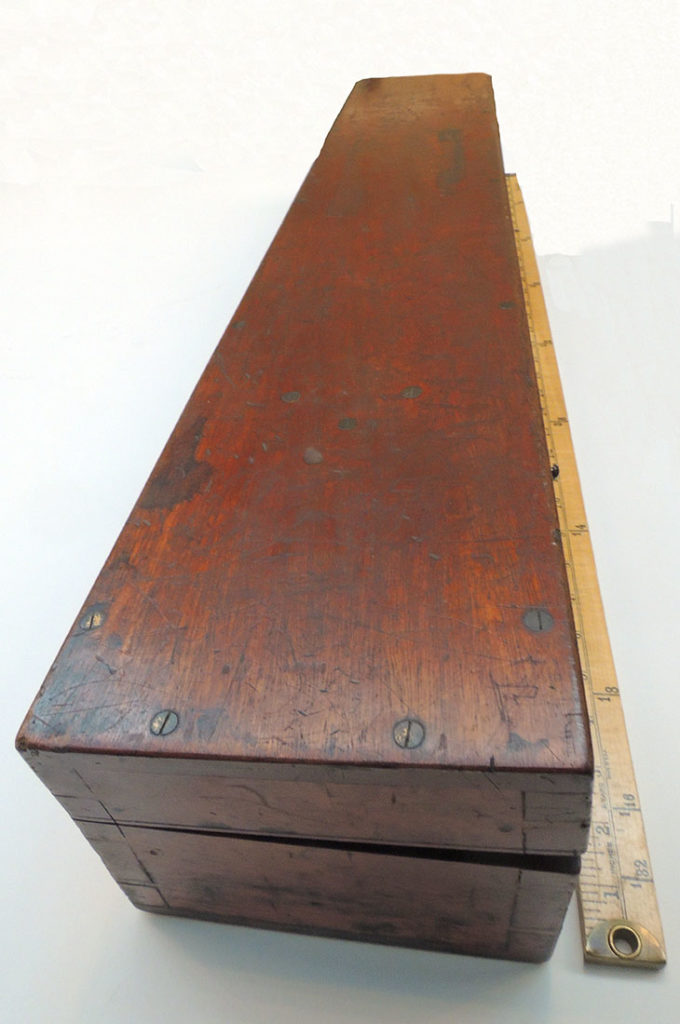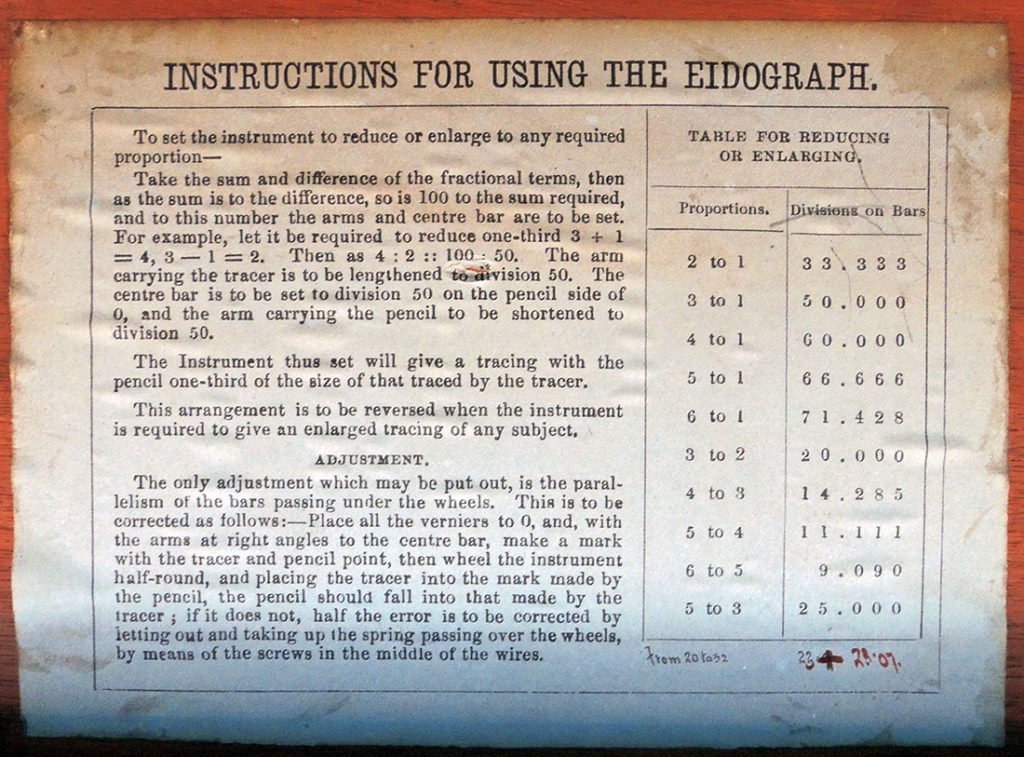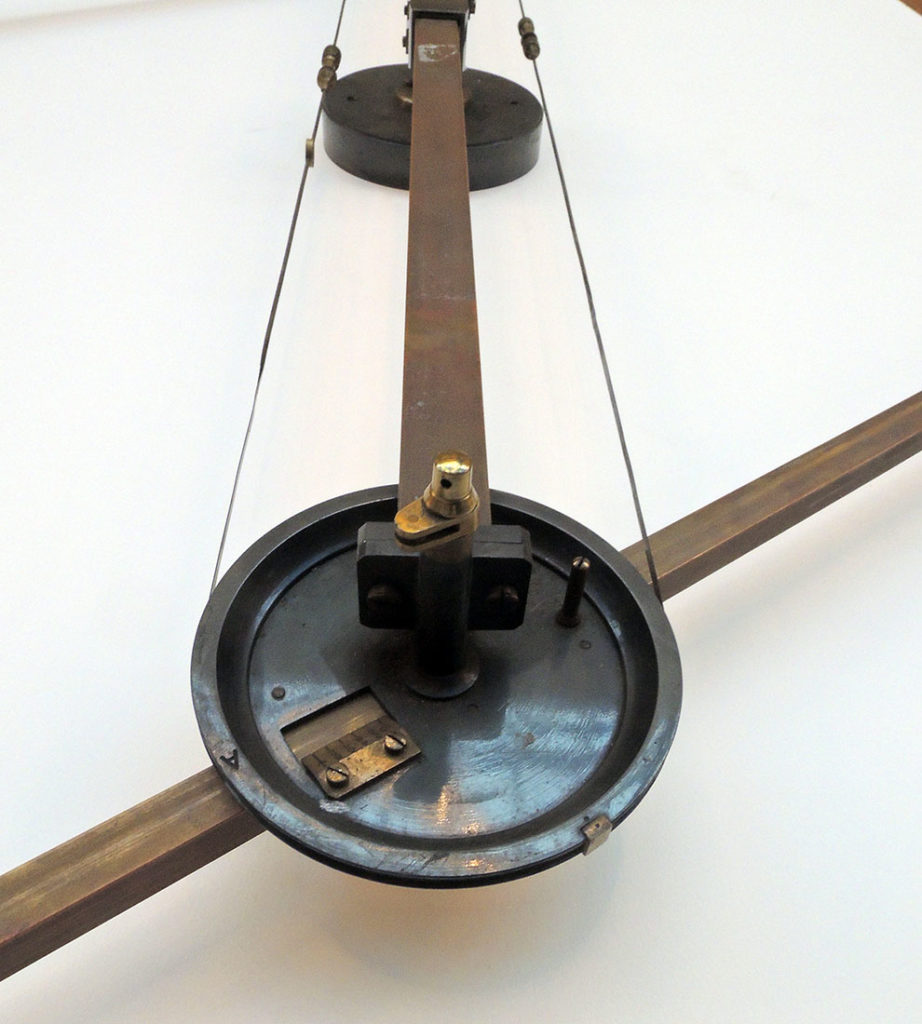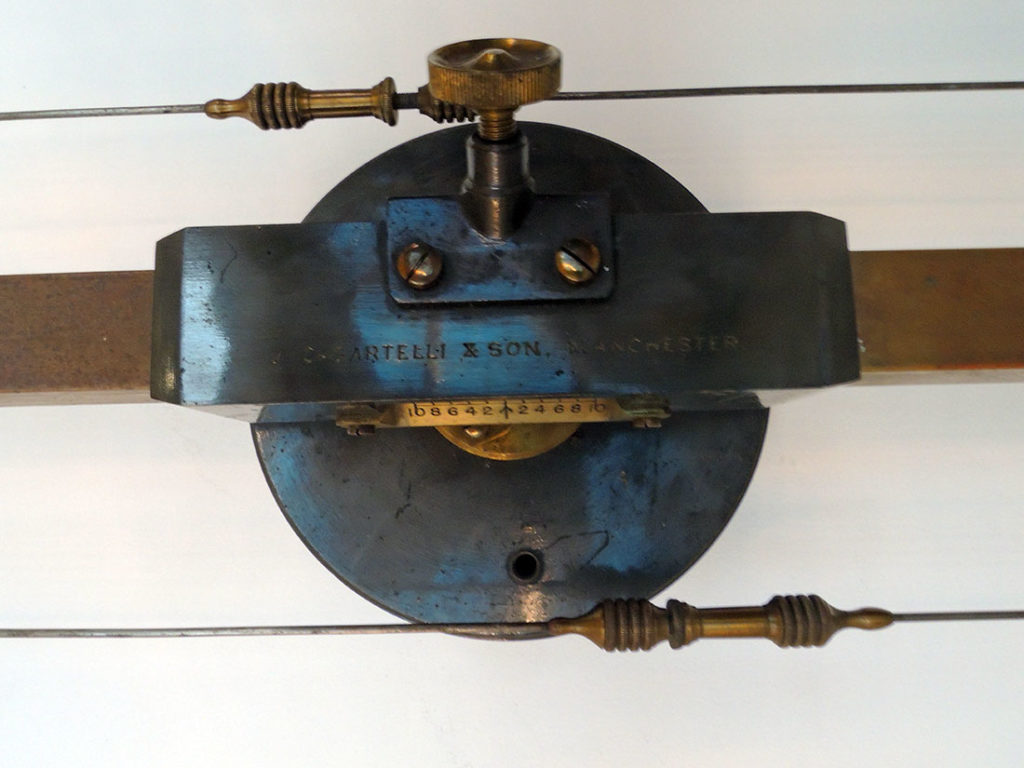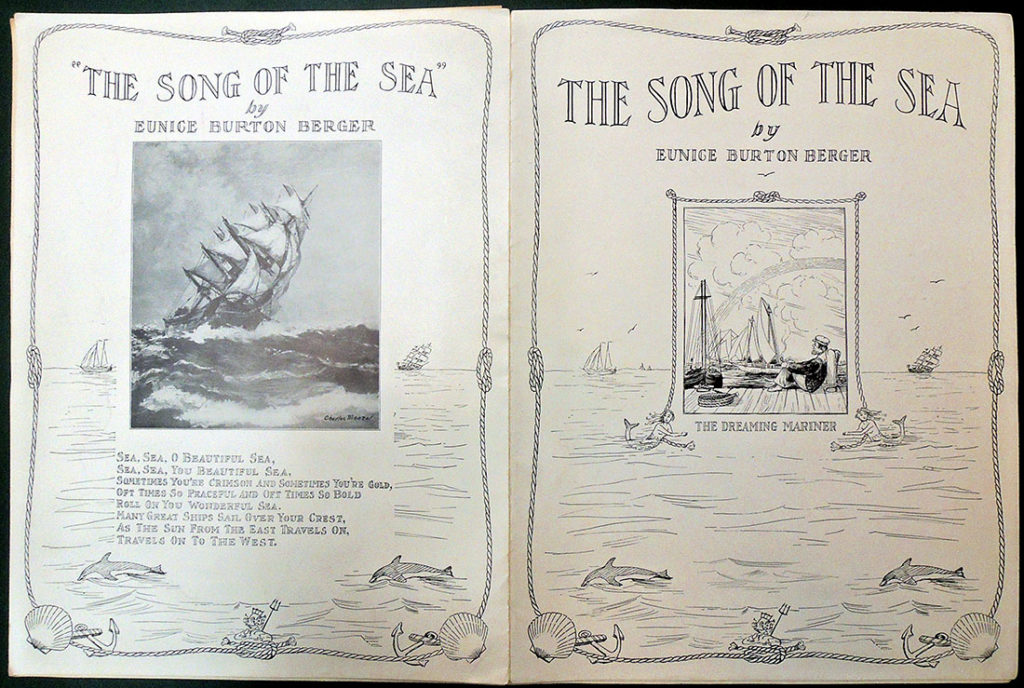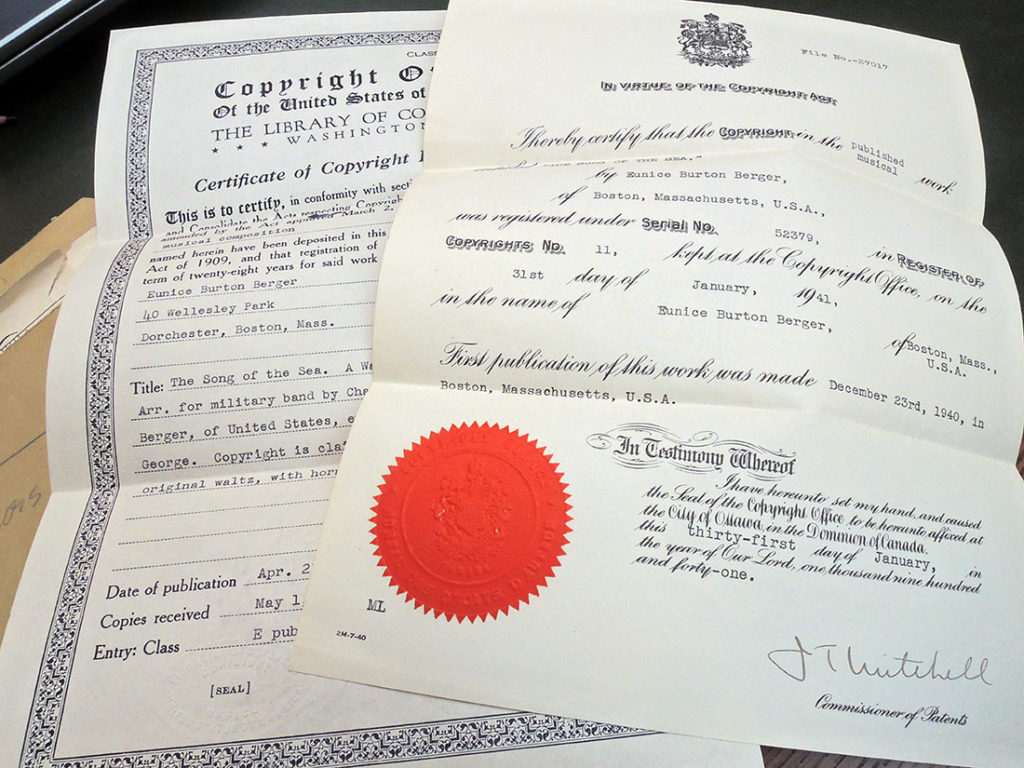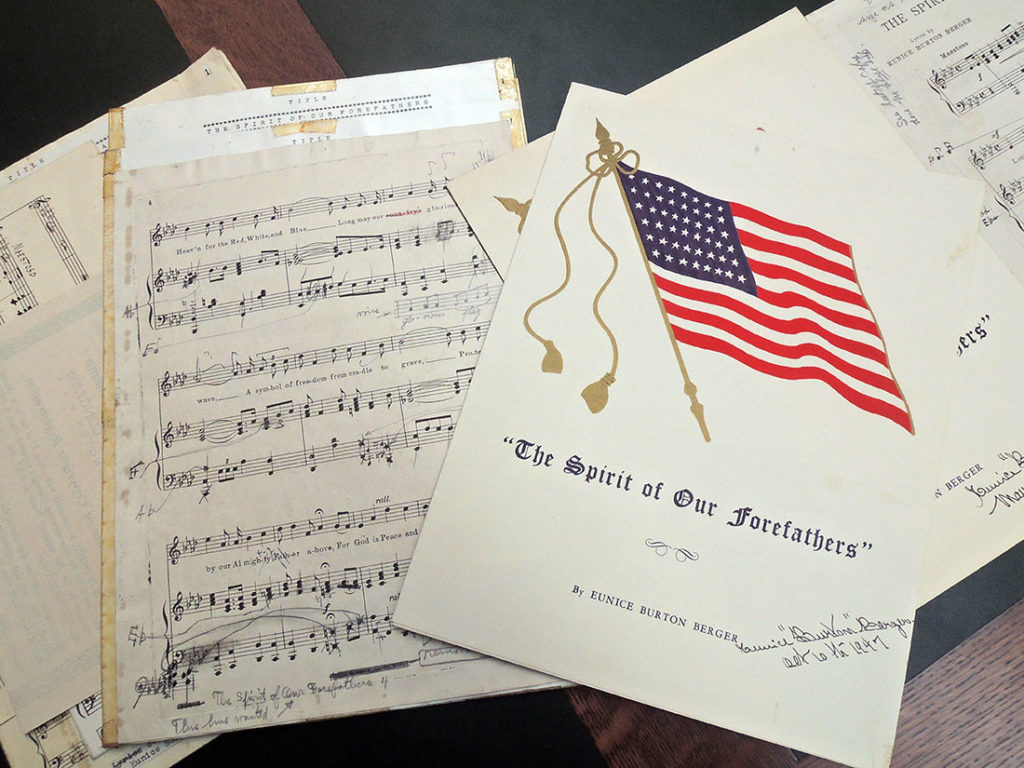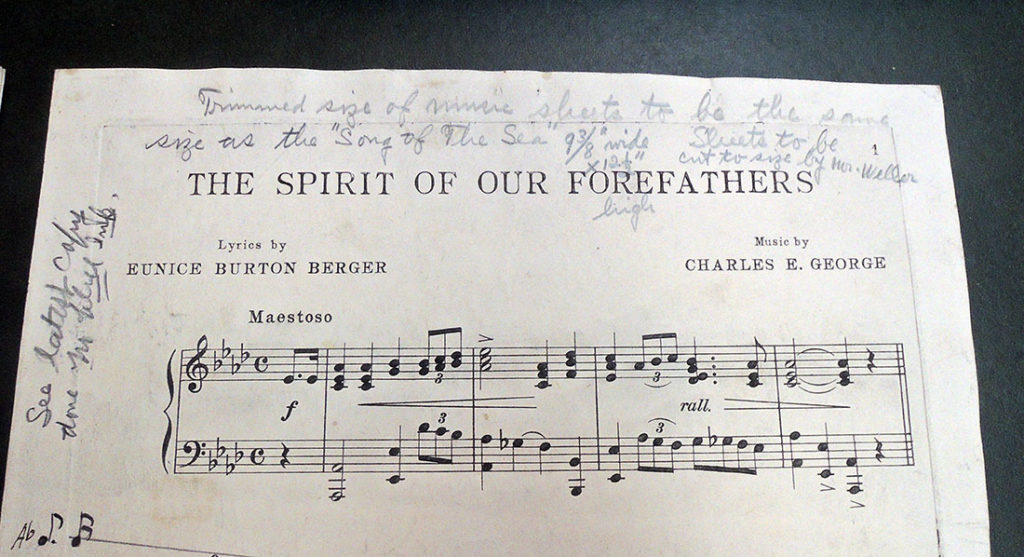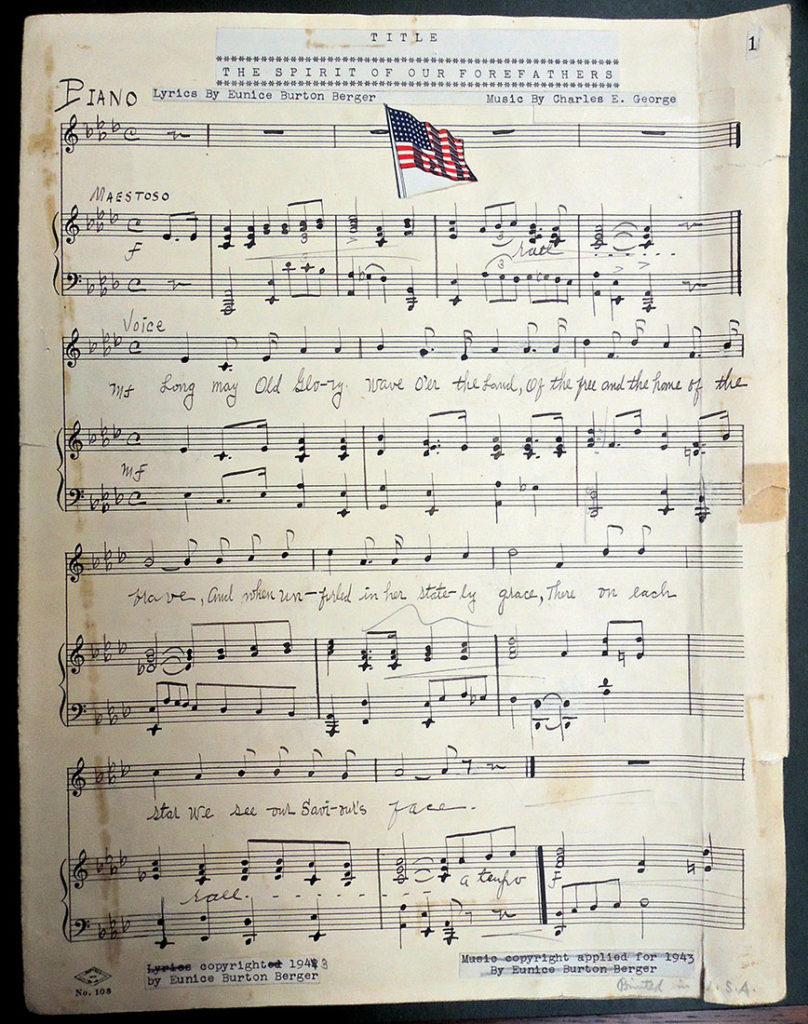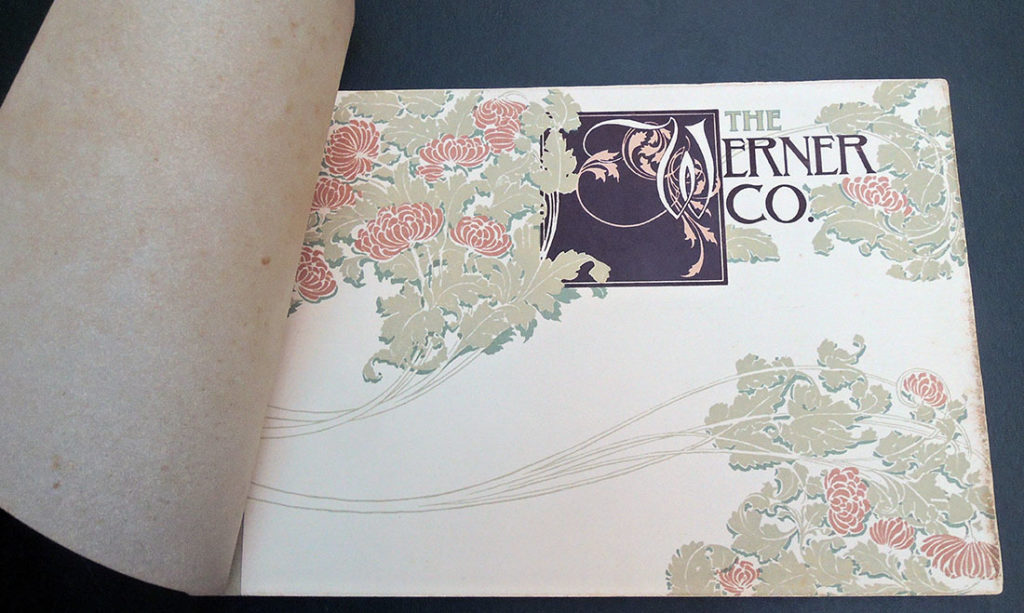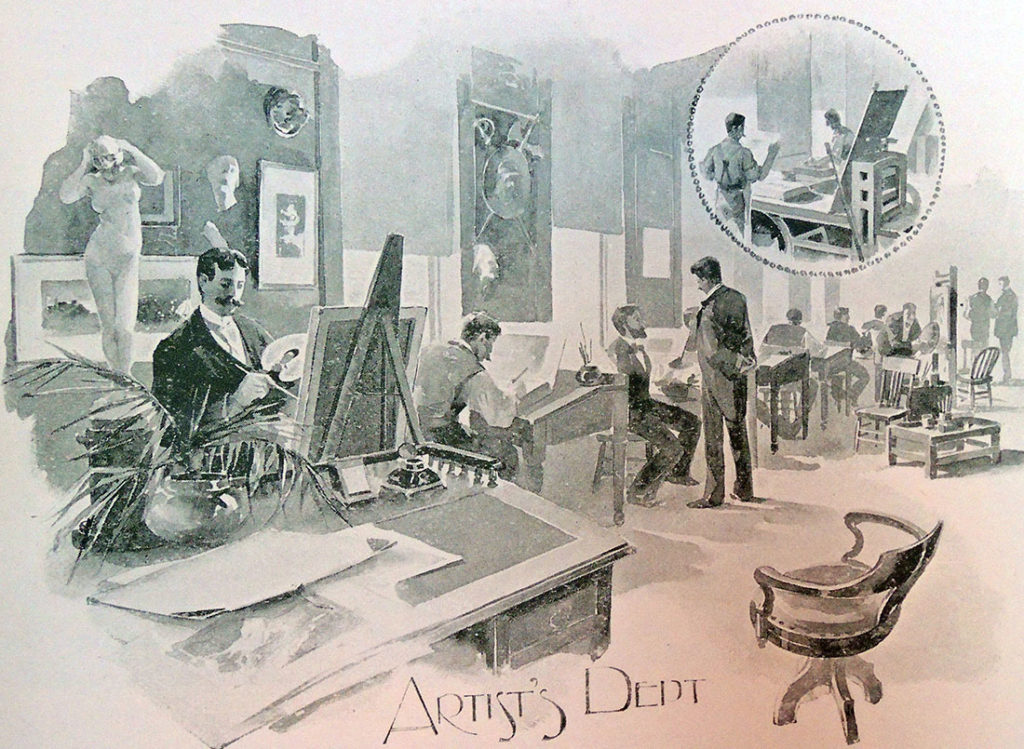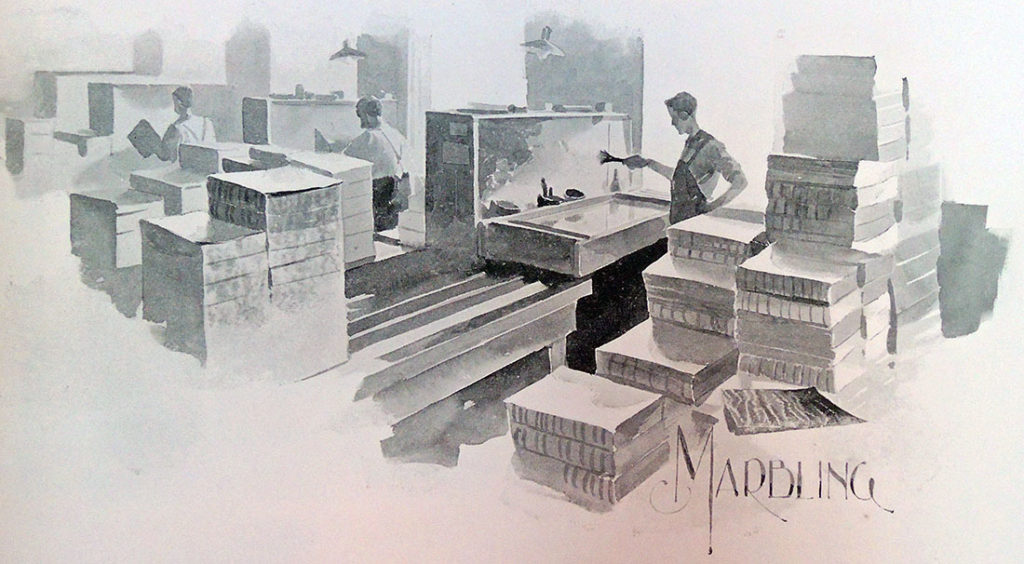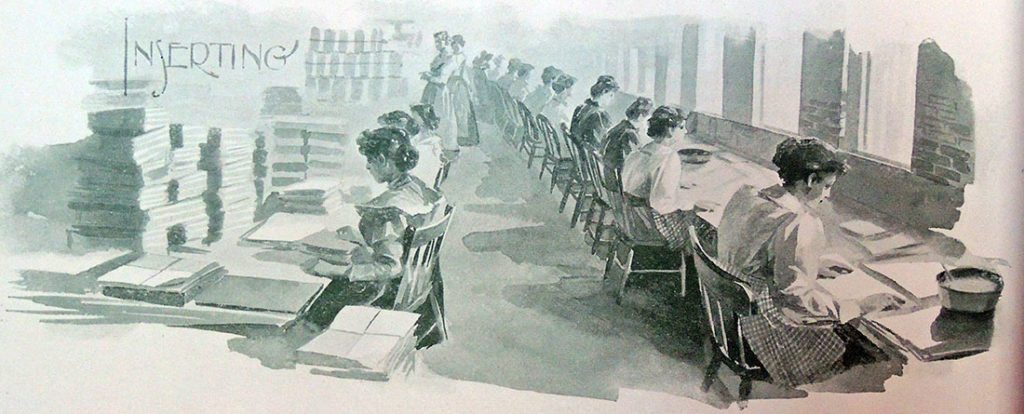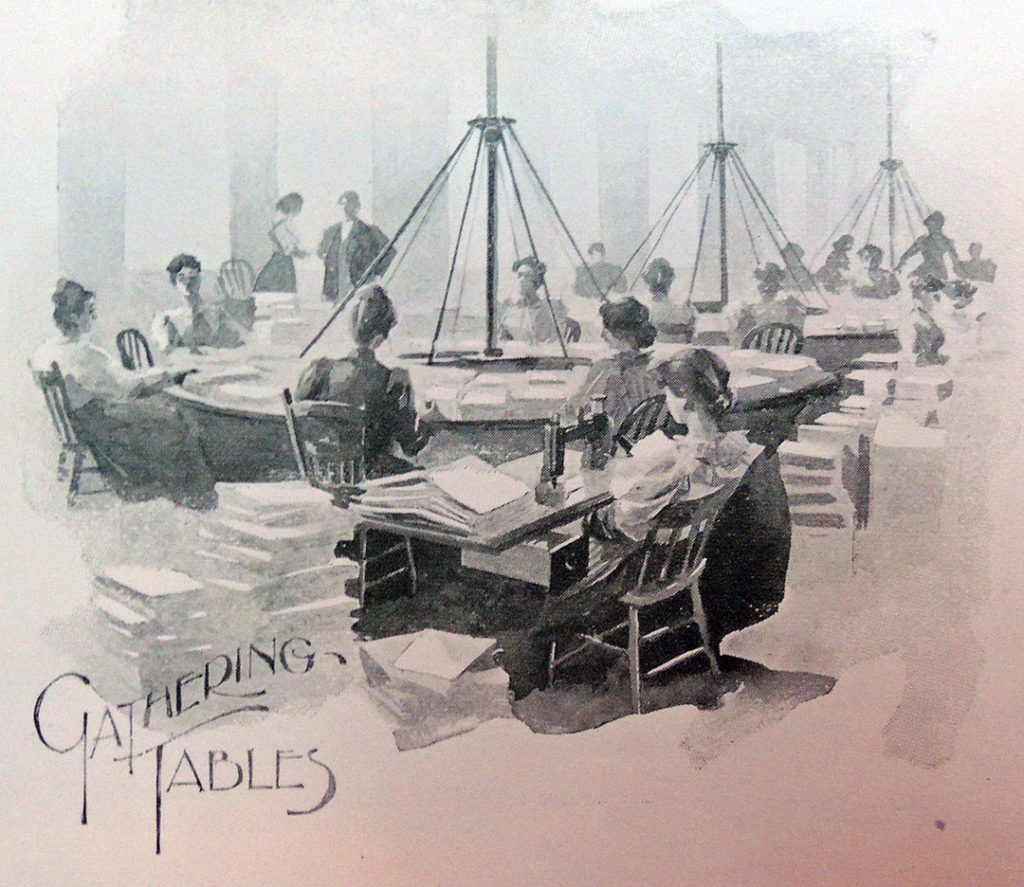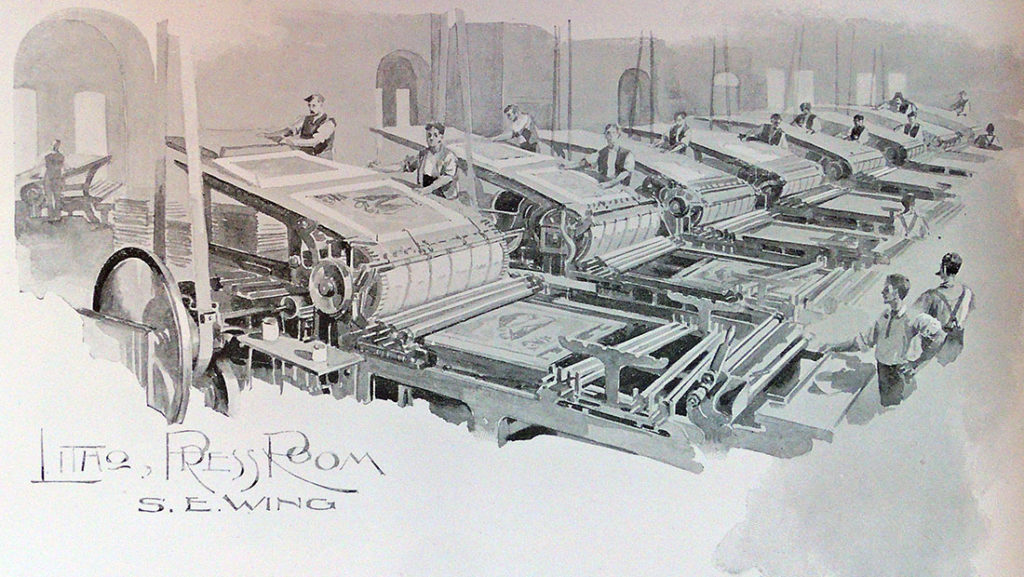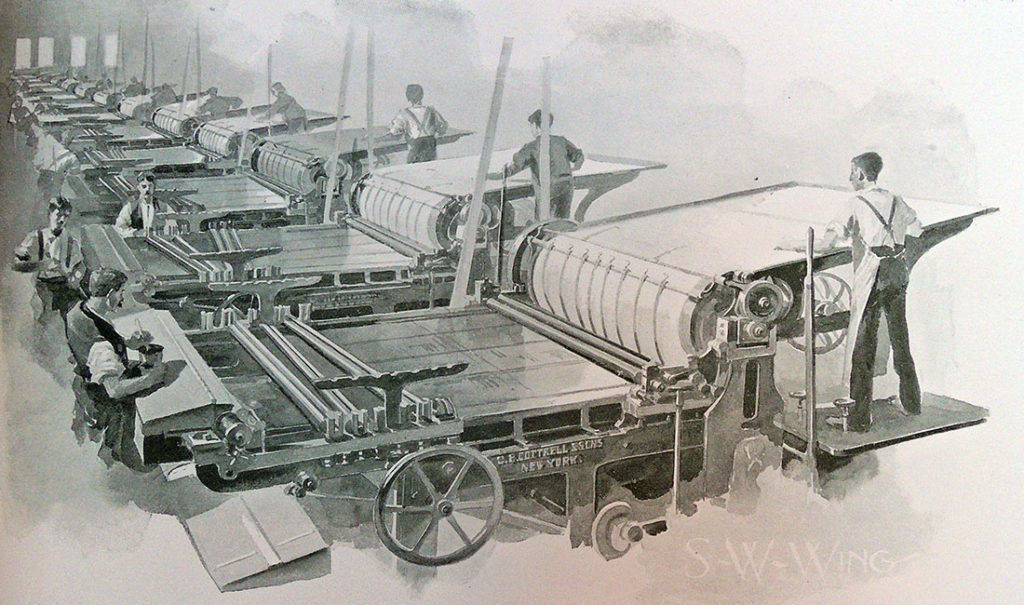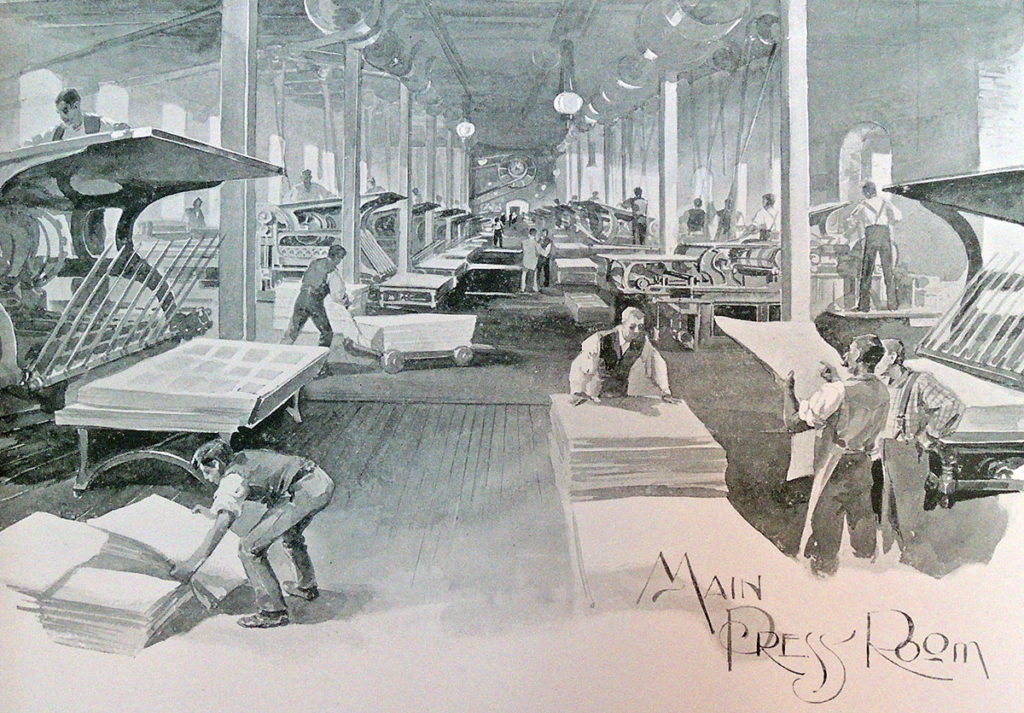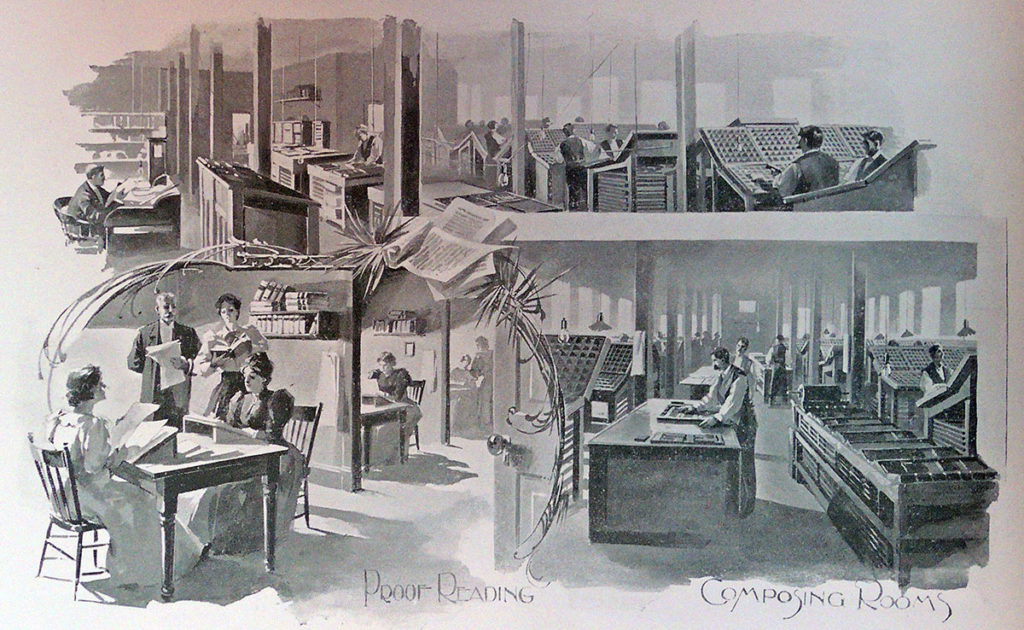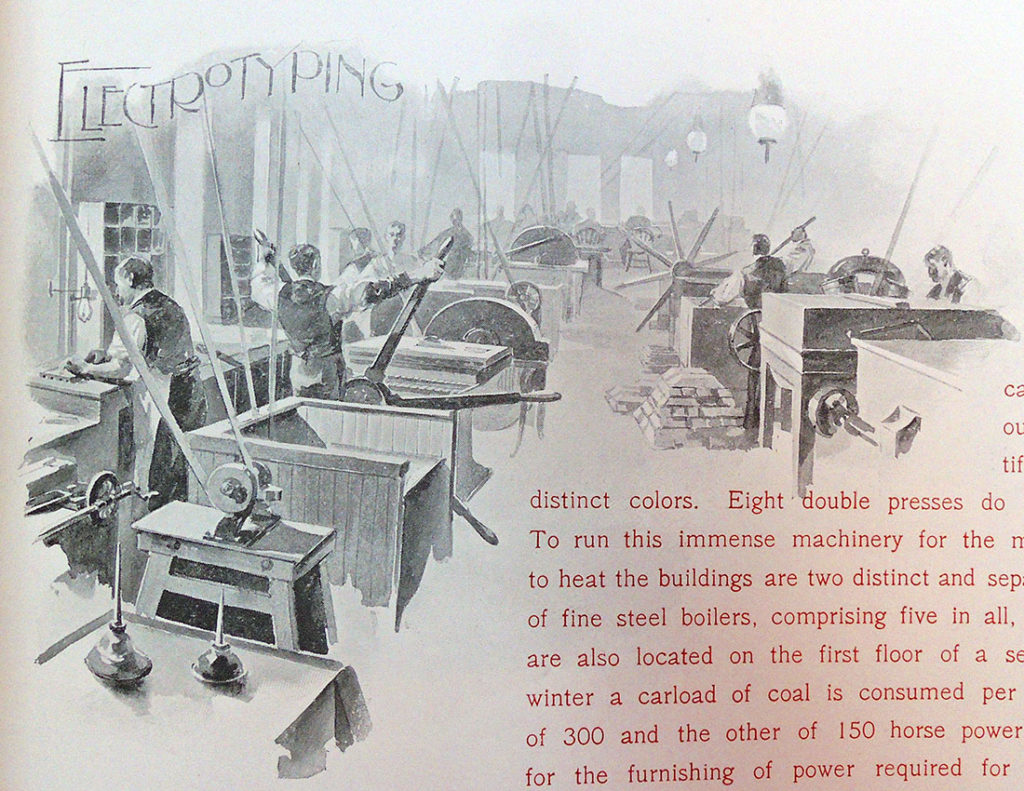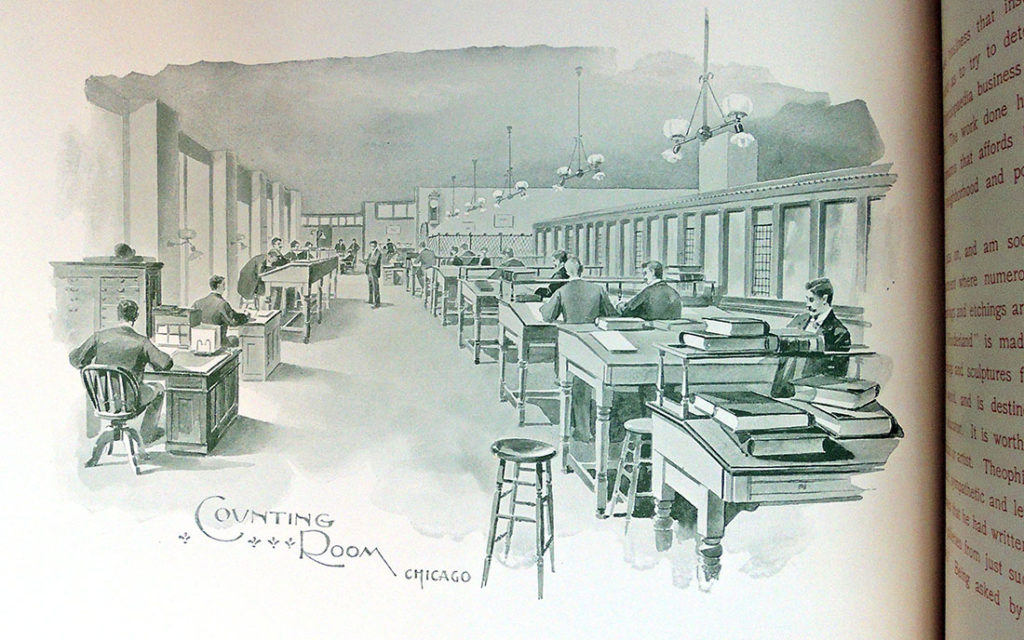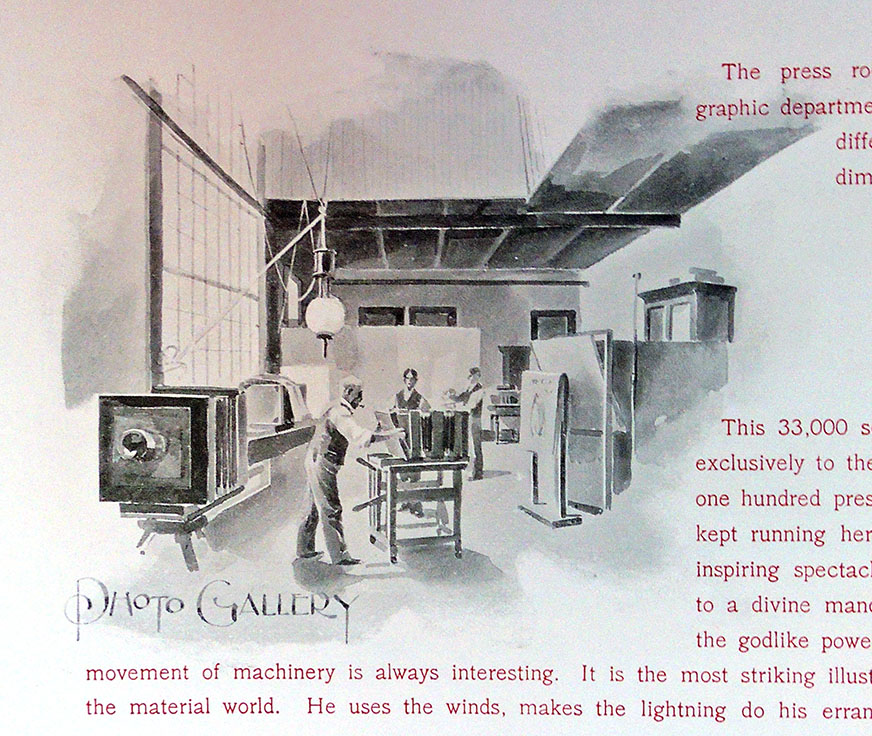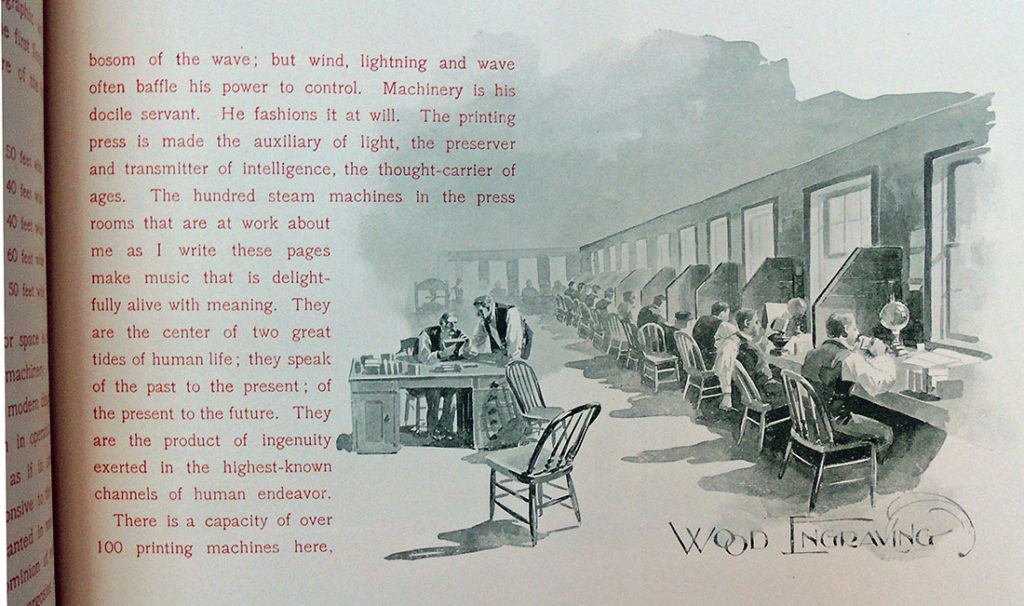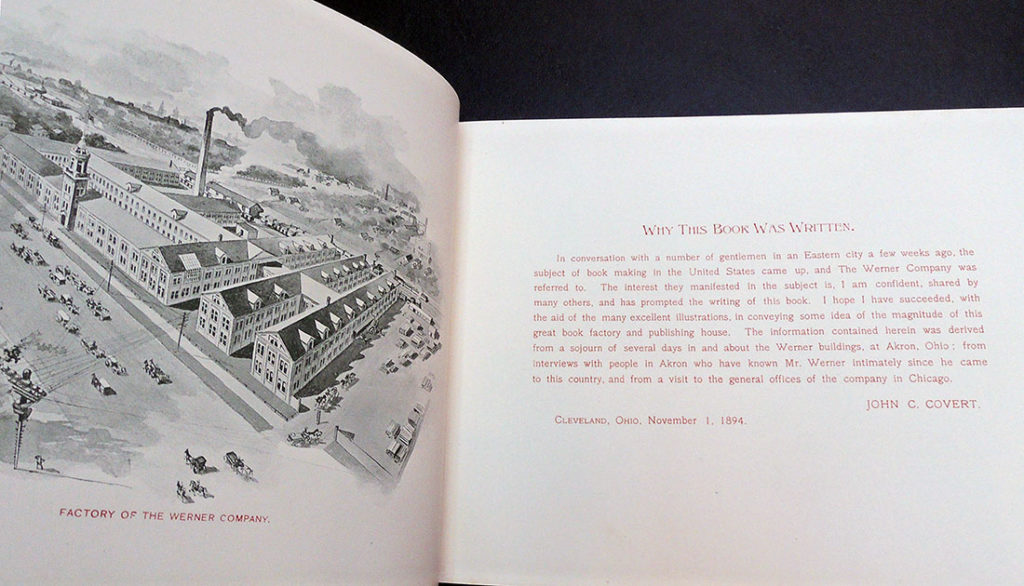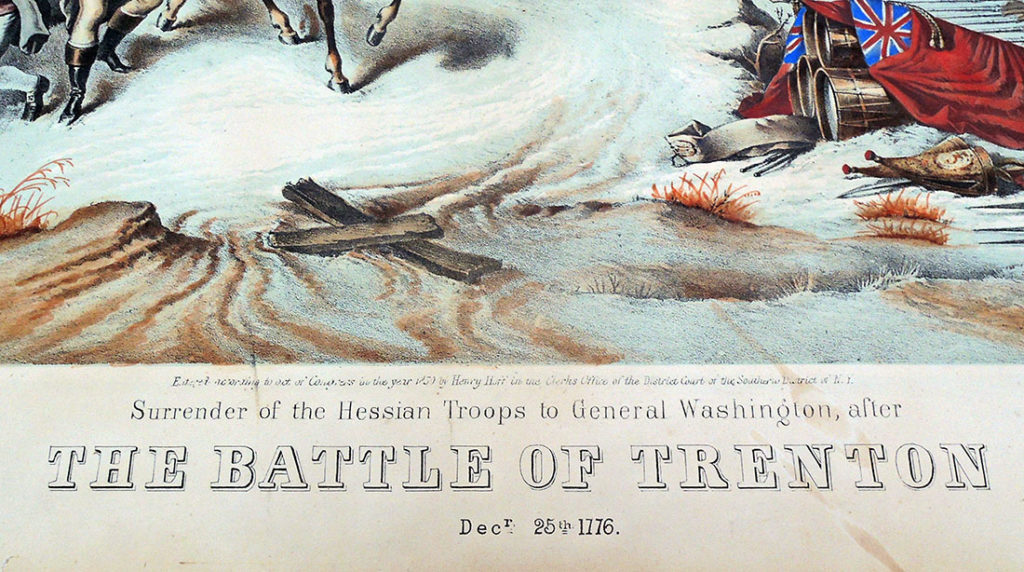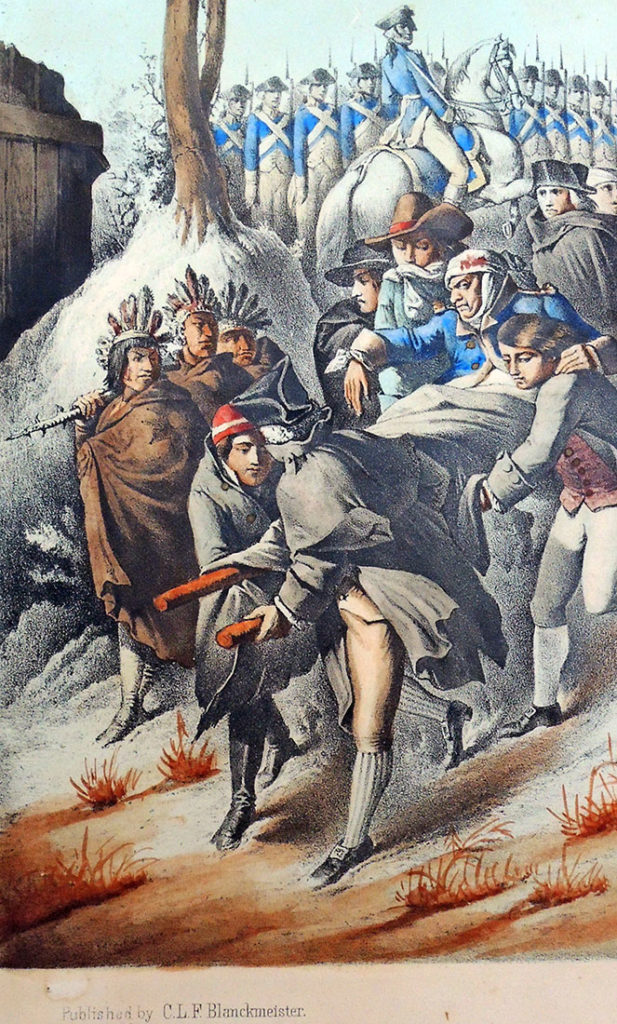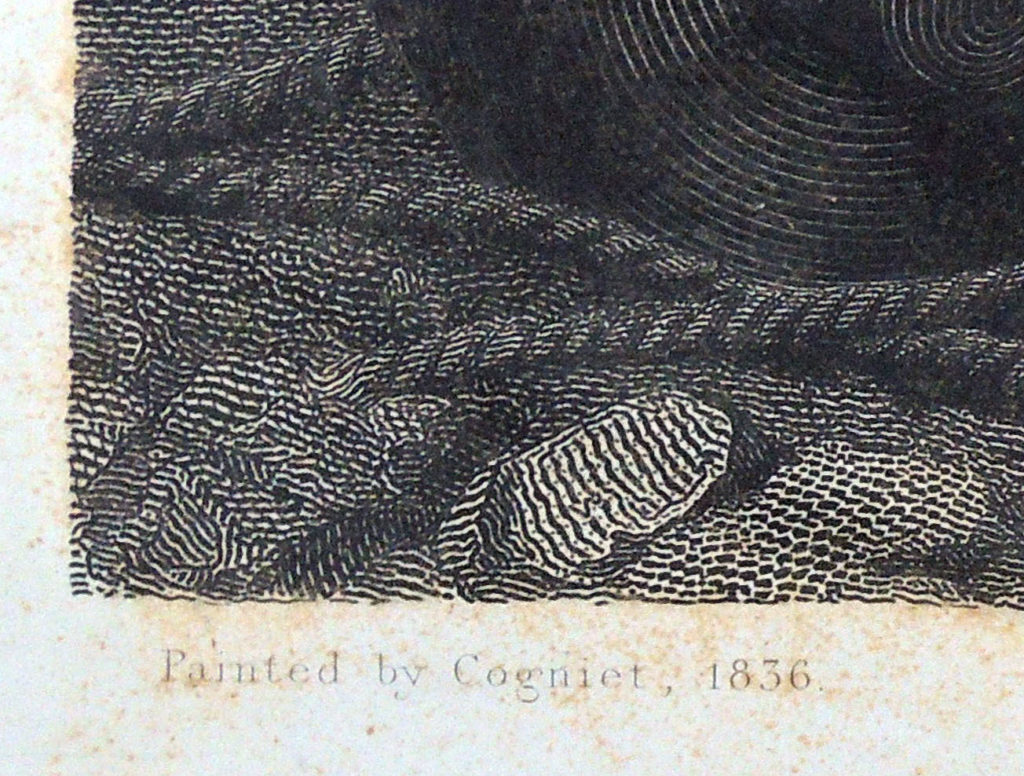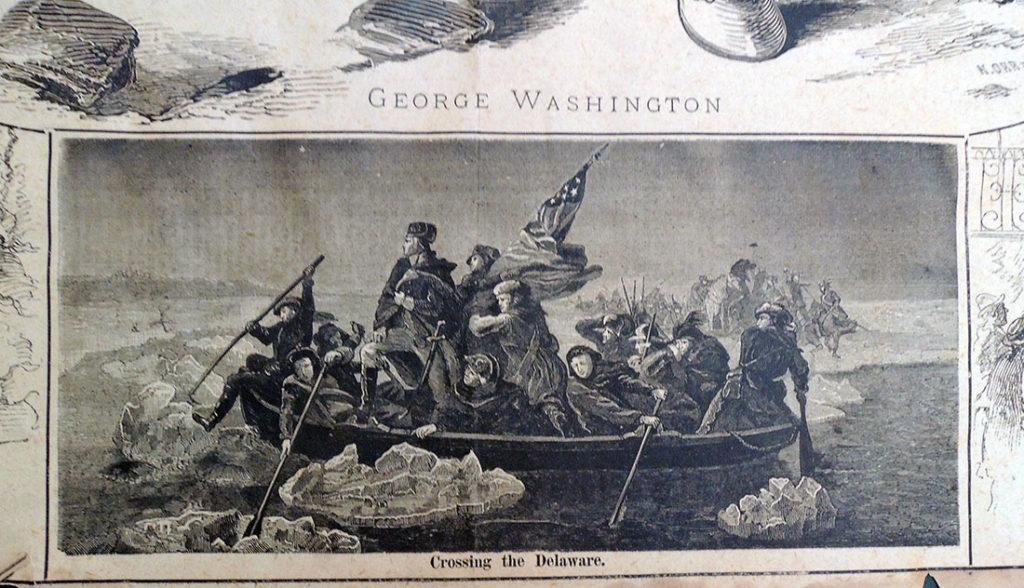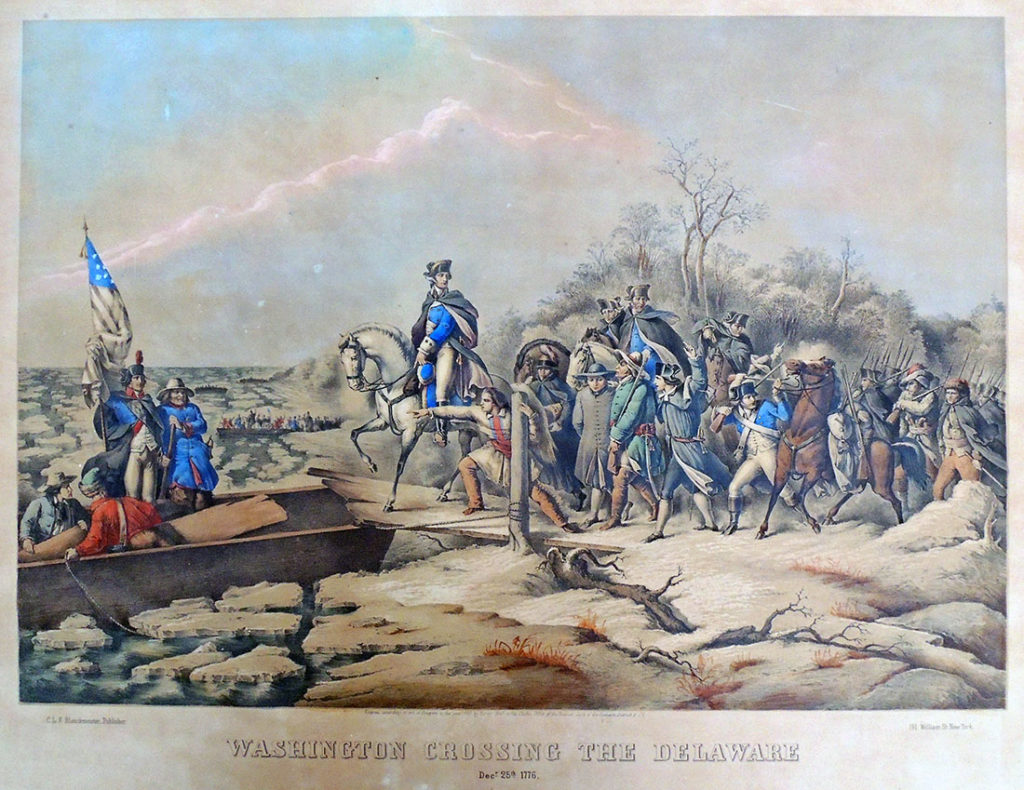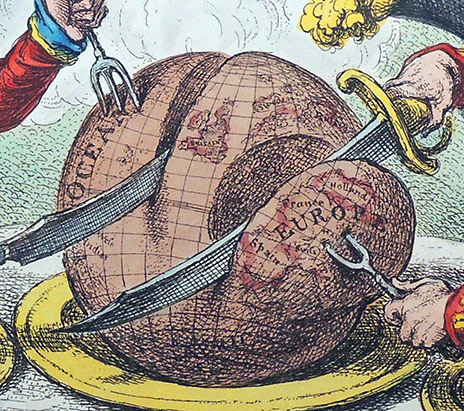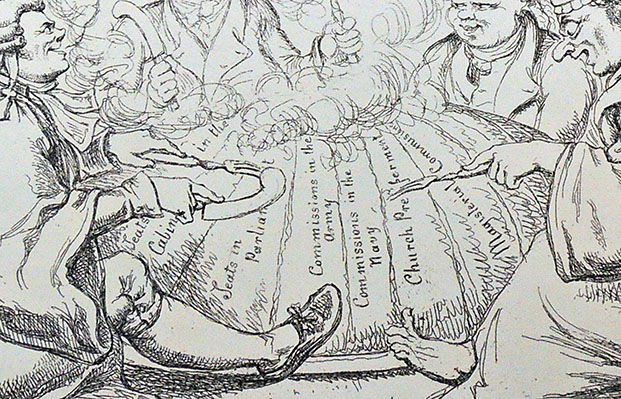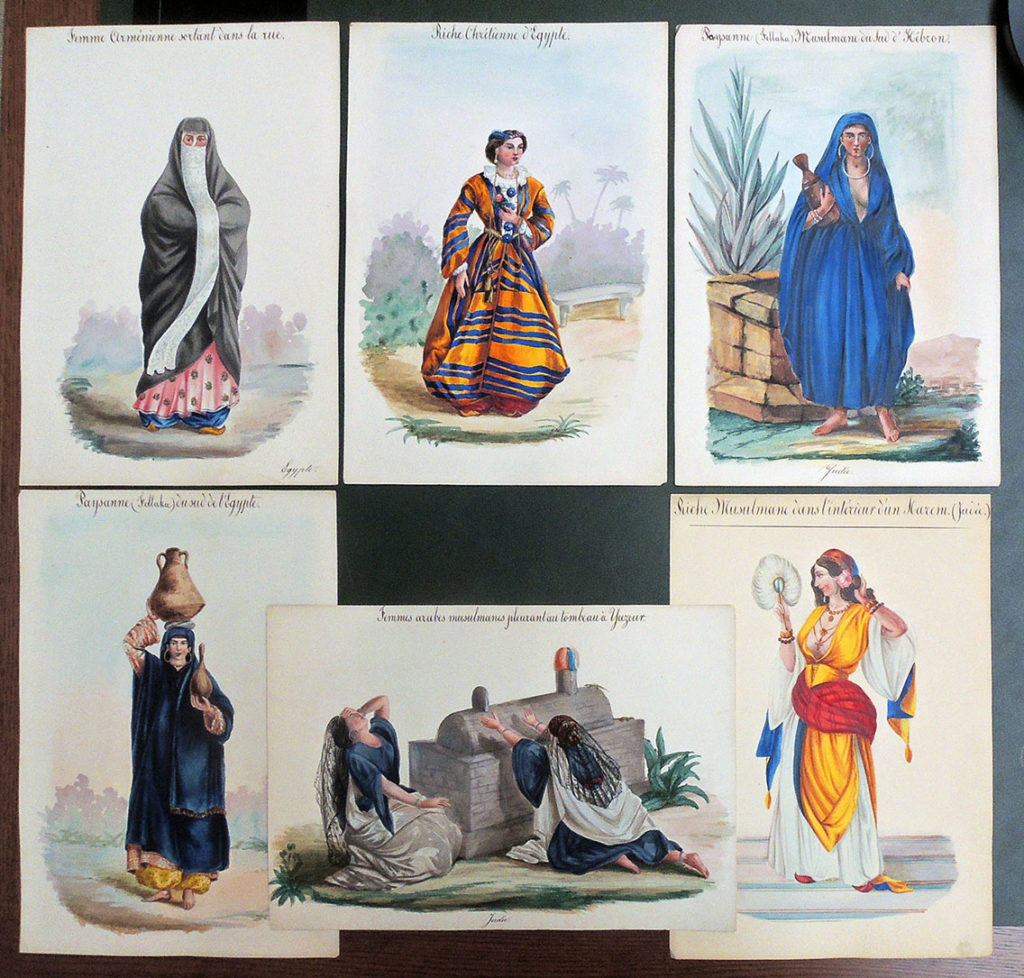
The Graphic Arts Collection holds a folder with 23 watercolor and gouache costume studies with ink lettering on tan paper. The only identification is a pencil note on the back in French, indicating they are from an album. No artist signature or stamp can be found although it is possible they have some connection with Octavien Dalvimart’s six volumes of The Costume of Turkey drawn from life in 1798. Here are the French titles in English:
Muslim Arab woman in the vicinity of Nablus [North of Jerusalem]
Vulgar odalisques
Christian woman from Jerusalem going out into the street
First walk of a new wife after marriage in Ramleh
Muslim Arabic woman in [?Beitjibrim]
Abyssinian selling parakeets in Cairo
Poor Christian in Nazareth
Rich Muslim in Aleppo
Rich Muslim in Damascus
Abyssinian odalisque
Muslim peasant from northern Egypt
Oriental odalisque dancer seen in Beirut
Christian woman from Mount Lebanon
Slave of rich house in Damascus
Young bride from Morocco
Rich Abyssinian living in Cairo, Egypt
Bedouin woman from Kerak
Armenian woman going out on the street
Rich Christian from Egypt
Muslim peasant from South Hebron
Peasant woman from Southern Egypt
Rich Muslim in the interior of a harem
Muslim Arab women crying at the shrine in Yuzur
Clavé’s Gargantua
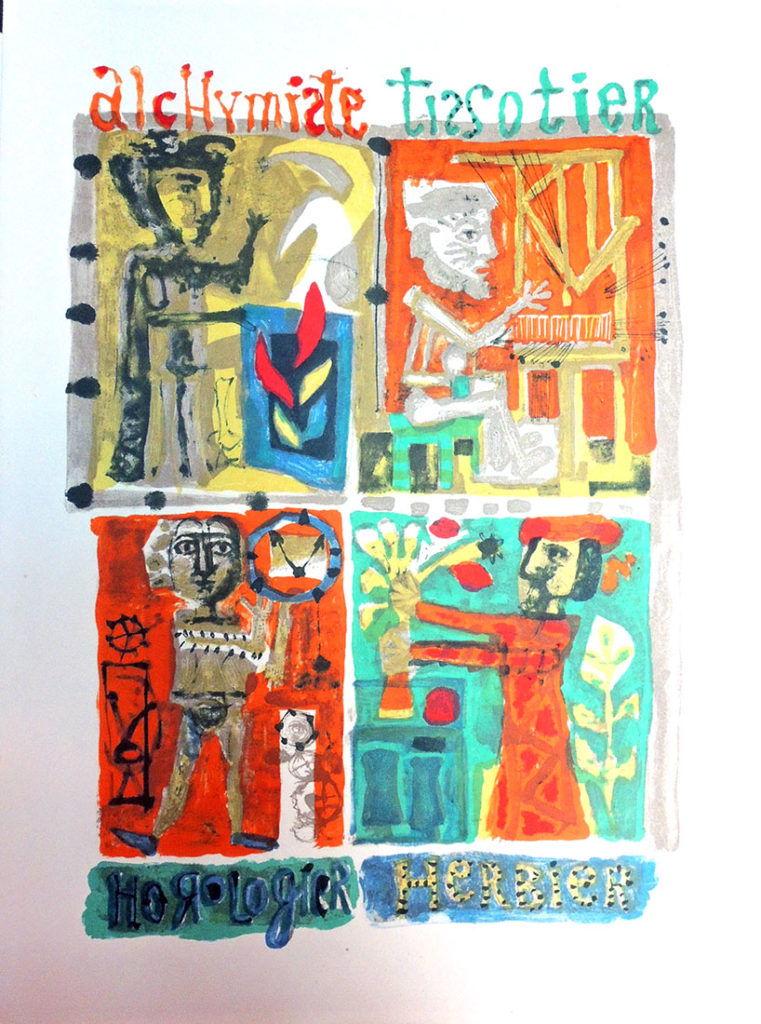 François Rabelais (approximately 1490-1553), Gargantua. Illustrated by Antoni Clavé ([Marseille]: Les Bibliophiles de Provence, 1955). No. 33 of 220 copies printed by Priester freres in Paris. 61 original color lithographs (including 4 double-page and 15 single-page, all hors-texte) + 61 original color woodcuts for lettrines and cul-de-lampe. Graphic Arts Collection GAX 2018-in process
François Rabelais (approximately 1490-1553), Gargantua. Illustrated by Antoni Clavé ([Marseille]: Les Bibliophiles de Provence, 1955). No. 33 of 220 copies printed by Priester freres in Paris. 61 original color lithographs (including 4 double-page and 15 single-page, all hors-texte) + 61 original color woodcuts for lettrines and cul-de-lampe. Graphic Arts Collection GAX 2018-in process
”… Gargantua (Rabelais), a work to which Clavé brought all his inventiveness of design. Apart from the brilliant color combinations (some involving five to eight separate stones)… Clavé devised a large number of initial letters… Certainly this book lives up to Rabelais’s exhortation ”Vivez joyeux”; it is also Gargantuan in scale with its format”. [Strachan goes on declaring this work as sequel to Derain’s Pantagruel]. Strachan The Artist & The Book in France, pp. 146 & 329.
The artist is not well known and so, here is an extended biography, https://www.antoni-clave.org/en/biography/
Antoni Clavé was born in Barcelona in 1913. At 13 years of age, and seeking employment, he is hired as an assistant in a textile shop for girdles and corsets. At the same time, he signs up for evening classes at the annex to the Escuela de Artes y Oficios Artísticos y Bellas Artes. As an apprentice house painter with Tolosa, he is attracted by the manual aspect of the work (distemper, primer, glues, and later the mixing of colors). …In April 1940, there is an exhibition at the « Au Sans Pareil » bookstore which is not very successful. In June, the Germans are at Paris’ gates. Clavé intends to leave Paris to make his way to Venezuela but the German tanks have already cut off the roadways and he is obliged to turn back. In 1941, Clavé moves into his first atelier at number 45, rue Boissonnade. His son Jacques is born in 1942 and his own mother moves to Paris. This is an intimate and introspective period for his work where he is influenced by Bonnard and Vuillard. The following year he produces the lithographs as illustrations for Lettres d’Espagne by Prosper Mérimée. In 1944 Clavé meets Picasso, and this encounter will have profound repercussions that will be decisive for the future of his art. His work is exhibited at the Galerie Henri Joly.
In 1946, he travels to Czechoslovakia for an exhibition of Spanish painters in Paris, among whom are Picasso, Borès, Dominquez, Florès, Lobo and Fenosa. He begins work on major set decoration and costumes for the ballet: Los Caprichos for the Ballets des Champs-Elysées (Paris, 1946), Carmen for the Ballets de Paris Roland Petit (Paris, 1949) and Ballabile for Sadler’s Welles Ballet (Covent Garden, London, 1950). His work is also to be found in many illustrated books: La Dame de Pique by Pouchkine and Carmen by Prosper Mérimée in 1946; Voltaire’s Candide in 1948; Gargantua by Rabelais in 1950. This work inspires new subjects and series: The King of Cards, Figures of the Middle Ages and Warriors. Many exhibitions follow: at the Galerie Delpierre in Paris in 1946, at the Anglo-French Art Centre of London in 1947, in 1948 at the Galerie Robert Martin in Oran, Algeria, at Malmö in 1949 and Göteborg, Sweden in 1950.
In 1951, he exhibits at the Galerie Witcomb in Buenos Aires, and in Rome at the Galleria dell’Obelisco, followed by the Galerie Drouant-David in Paris in 1953, at the Galleria del Sole in Milan in 1954 and in London at the Tooth Gallery in 1955. His creations for the theatre are an essential part of his work at this time: La maison de Bernarda Alba by Federico Garcia Lorca, Festival de Biarritz and the Théâtre de l’Œuvre, Paris, 1951; Revanche, Ballet by Ruth Page, Chicago Opera Ballet, 1951; Don Perlimplin, by Federico García Lorca, Festival du XXe siècle, Paris, 1952 ; Les Noces de Figaro, by Mozart, Festival d’Aix-en-Provence, 1952 ; Deuil en 24 heures, Ballets de Roland Petit, Paris, 1953. In 1954, Clavé decides to abandon theatre design in order to devote himself to his painting. His final decorative work will be for the set and costumes for La Peur, a ballet by Roland Petit.
See also: https://www.princeton.edu/~graphicarts/2011/08/pantagruel.html
Bad Taxidermy and other books
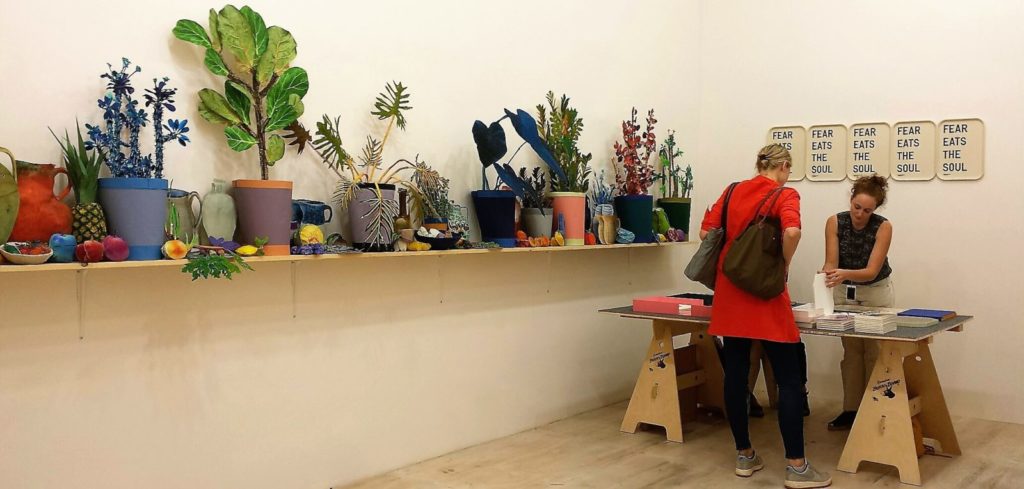
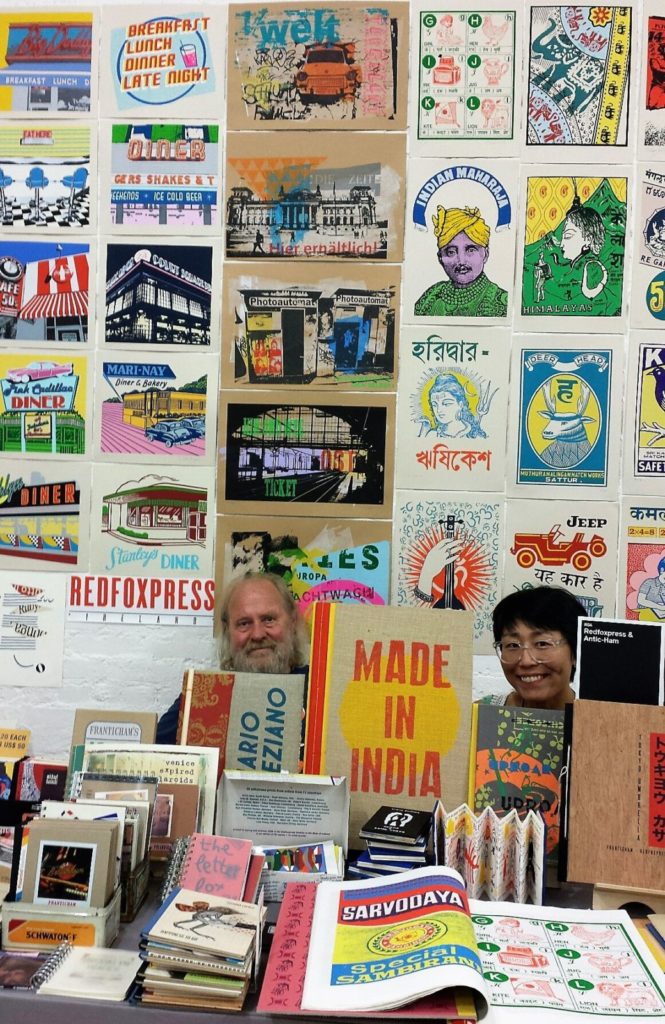

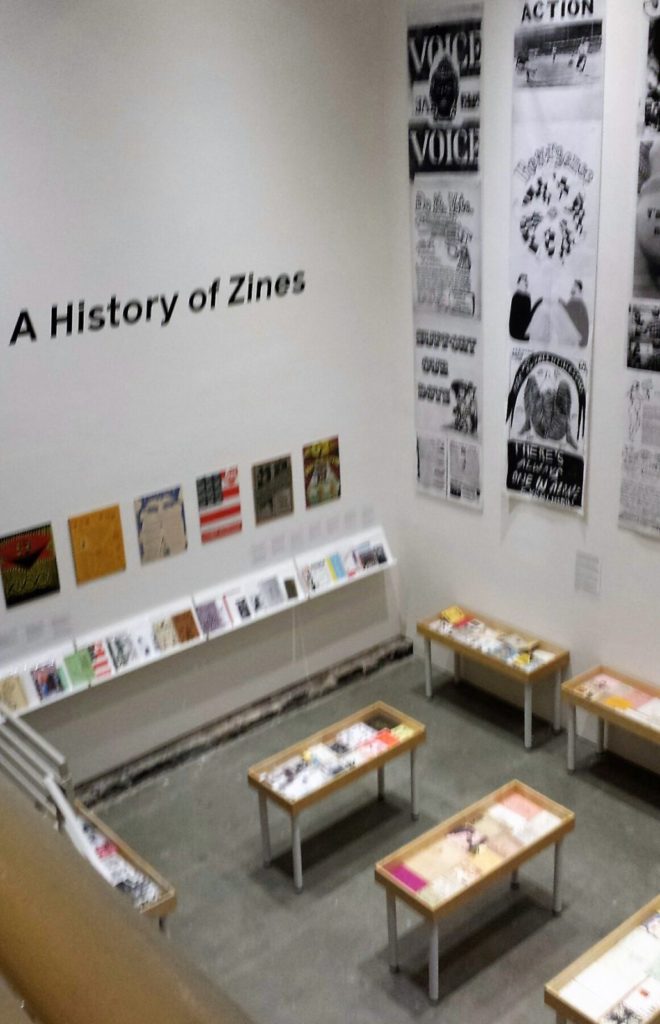 The tables at this year’s NY Art Book Fair varied enormously from floor to ceiling installations inside PS1, to plastic lawn chairs in the outside tent. Many regulars were not present this year, replaced by galleries and university presses.
The tables at this year’s NY Art Book Fair varied enormously from floor to ceiling installations inside PS1, to plastic lawn chairs in the outside tent. Many regulars were not present this year, replaced by galleries and university presses.
Highlights included a digital capture of Central Park weather represented not with numbers or text but music by Sara Bouchard; Ellsworth Kelly’s commission for the Germany’s national newspaper Die Welt, in which he replaced every news photo with a silhouette of one of his artworks; and free copies of Ann Messner’s commission for Franklin Furnace Archive Inc and The Pratt Institute Libraries called “The Free Library and Other Histories.” (link to your own copy here: https://annmessner.net/portfolio_page/the-free-library-and-other-histories-2018/)
A number of events take place in the Basement Theater, including the announcement of the 2018 Paris Photo–Aperture Foundation photoBook awards shortlist, celebrating the photobook’s contribution to the evolving narrative of photography. Showcasing the best recently published books across three major categories: First PhotoBook, PhotoBook of the Year, and Photography Catalogue of the Year.
Photography albums and scrapbooks of Mexico
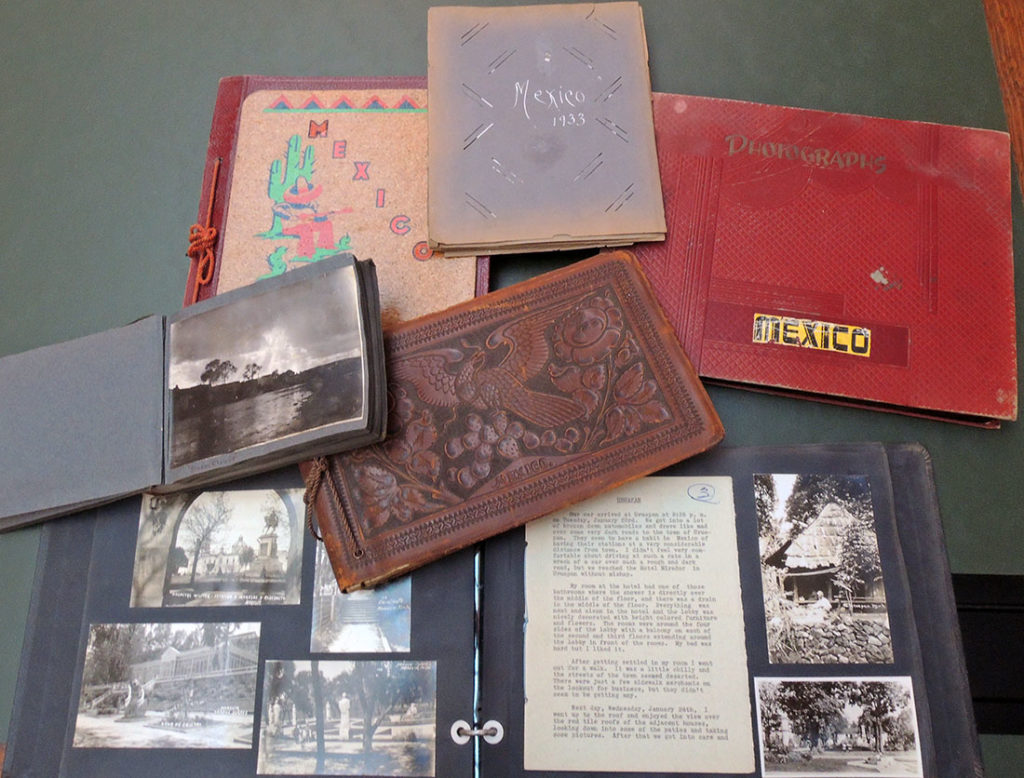 https://catalog.princeton.edu/catalog/5731327
https://catalog.princeton.edu/catalog/5731327
https://findingaids.princeton.edu/collections/RCPXG-5830371.2
Twenty-five boxes of Mexican ephemera were acquired several years ago with a wide variety of materials included. A recent request for the photography albums and scrapbooks has led to the individual cataloguing of these unique, unpublished items (in process). The images include such diversity of commercial and personal photography, along with stamps, labels, souvenirs, brochures, and other ephemeral material, many with handwritten captions, that a few quick images were captured here.
Gospels for Sundays and Saints Days
Louis Barbat ( 1795-1870), Évangiles de Dimanches et fêtes. Illustrés par Barbat père et fils (Chalons-S-Marne: Imprimerie Lithographique Barbat, 1844). Graphic Arts Collection GAX 2018- in process
OCLC lists fewer than a dozen copies of Barbat’s masterpiece of early lithographic printing in libraries worldwide and so, it is a treat to have acquired a copy for the Graphic Arts Collection. In his discussion of 19th-century printing on coated or enameled papers, Michael Twyman mentions two reasons for using “carton porcelaine” as Barbat does with this volume: First because when powdered colors were used, its smooth surface made it easier to brush away the powder from unwanted areas and second, because the coating limited the amount of water that was absorbed in the course of printing. The two notable publications he sites that made use of such paper are Midolle’s Recueil, ou, alphabet de lettres initials historiques (1846) and Barbat’s Évangiles seen here.
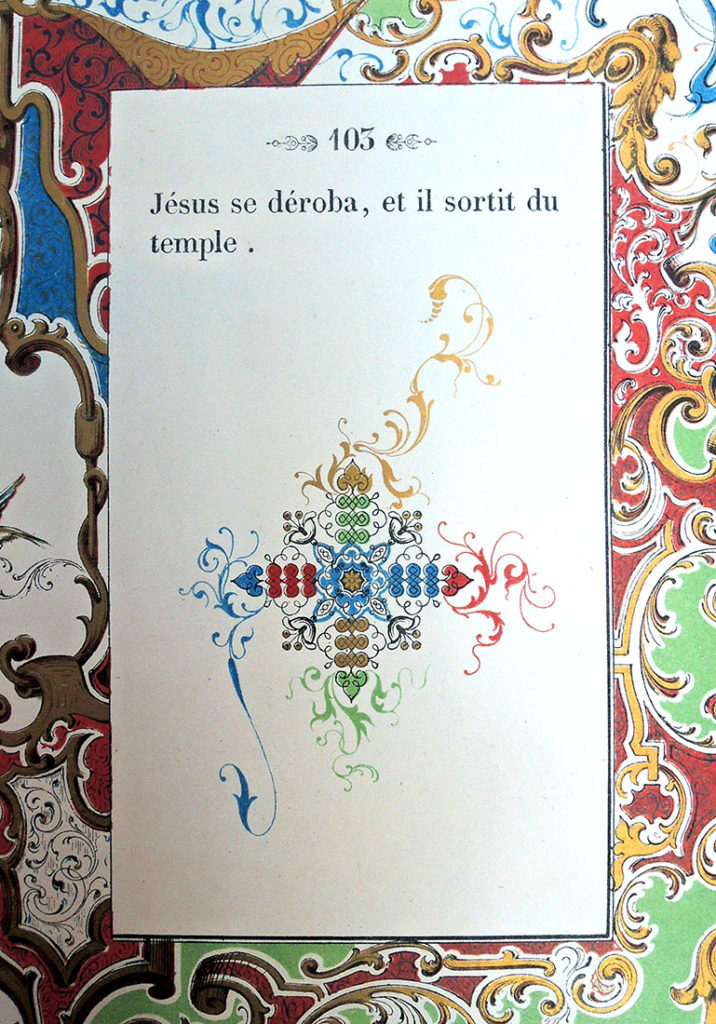
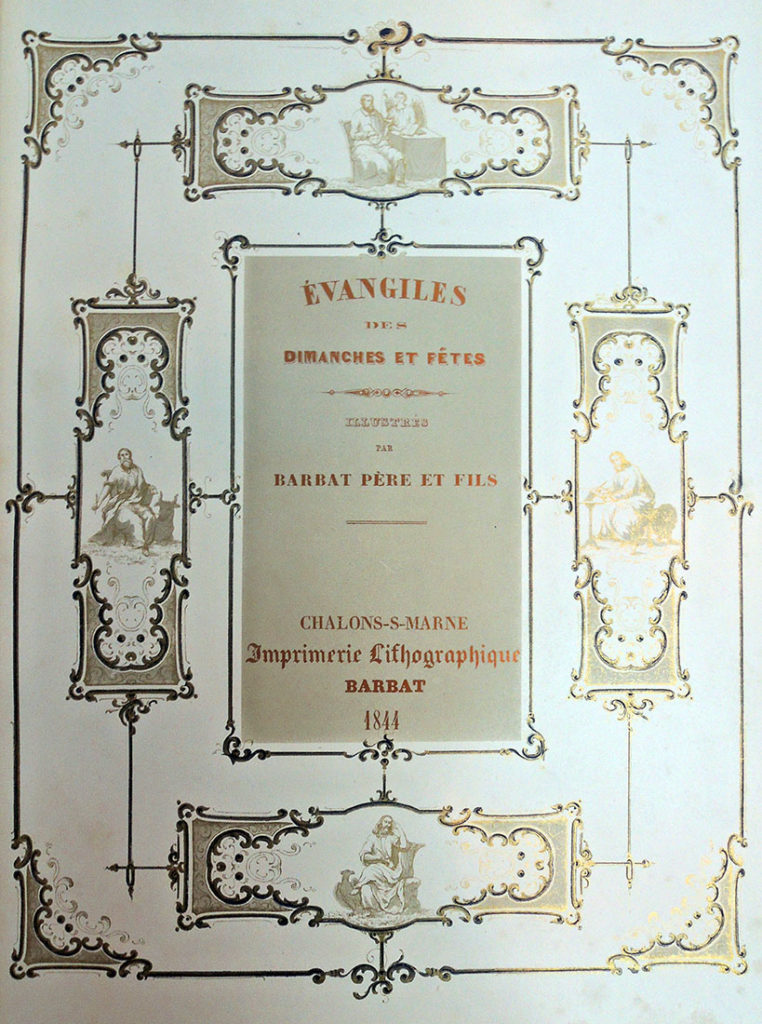 Louis Barbat and his son Pierre-Michael opened their shop in 1833 after several years experimenting with lithography. On January 3, 1834, they received a patent to adapt a printing press to print several colors simultaneously. Barbat’s entry for the 1839 Paris exposition, which included some of the title pages for the Évangiles, was praised for his color printing and at the 1844 Paris exposition the completed Évangiles was awarded a silver medal.
Louis Barbat and his son Pierre-Michael opened their shop in 1833 after several years experimenting with lithography. On January 3, 1834, they received a patent to adapt a printing press to print several colors simultaneously. Barbat’s entry for the 1839 Paris exposition, which included some of the title pages for the Évangiles, was praised for his color printing and at the 1844 Paris exposition the completed Évangiles was awarded a silver medal.
Twyman notes that Évangiles “was very much a family undertaking and, in addition to a prominent reference to the Barbat name on both the imprint page and title-page, Barbat, P. Barbat, and Barbat fils are acknowledged as designers at the foot of many borders. This suggests that, like many other lithographic establishments of the day, the ‘Imprimerie lithographique Barbat’ was very much artist-driven.” Interesting to note this on the eve of the artist’s book fair where the artists’ book are frequently defined as beginning in 1965.
Although our collection holds a number of printed labels and Belgian “carton porcelaine” trade cards, we do not have any of Barbat’s metallic wine labels for the Champagne merchants. This would be a wonderful addition, if anyone has any left-over bottles.
See also:
Michael Twyman, A History of Chromolithography, Graphic Arts: Reference Collection Oversize NE2500.T8 2013, pp. 166, 180-81, 191, 275-77, 432, 521; plates 136 & 355.
Sorbonne on-line Dictionnaire des Imprimeurs-lithographes du XIXe siècle. http://elec.enc.sorbonne.fr/imprimeurs/node/25137
When Size Matters: The Eidograph
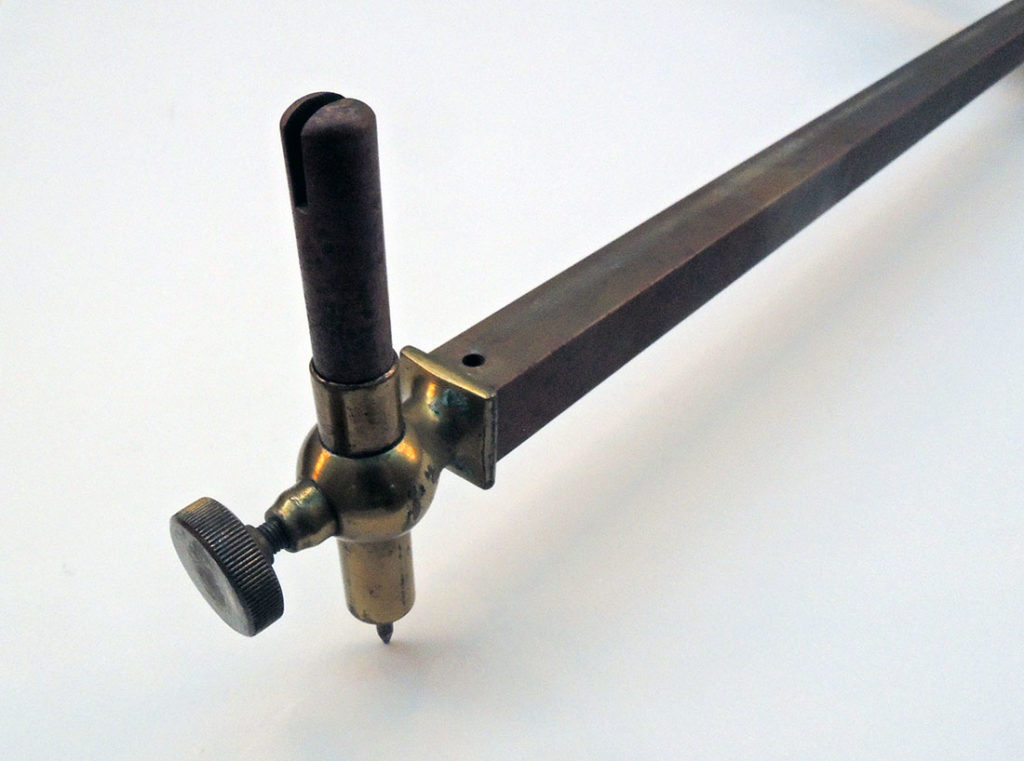
A quick and (relatively) simple way to enlarge or reduce an engraving, map, or chart in the 19th century was to use a Pantograph. See: http://libweb5.princeton.edu/visual_materials/maps/globes-objects/hmc05.html#pantograph
But if you were a skilled, sophisticated graphic artist, you might prefer the more complex instrument known as the Eidograph, such as this one recently acquired by the Graphic Arts Collection.
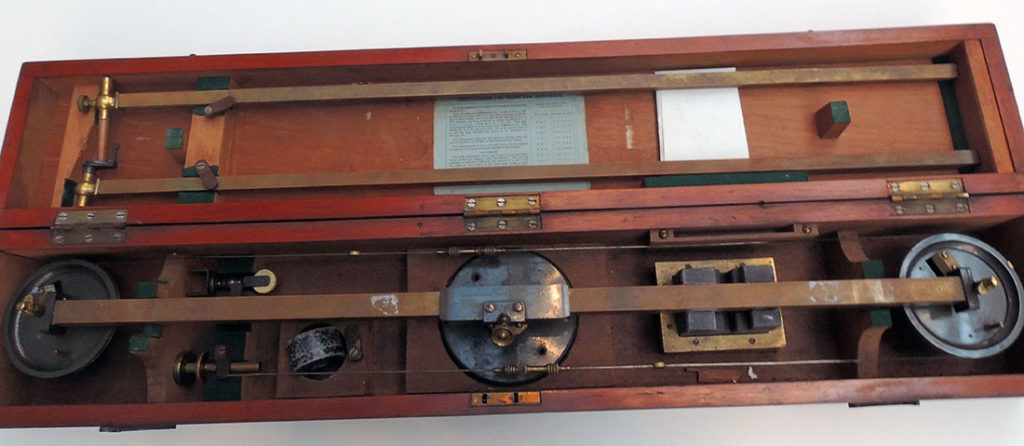
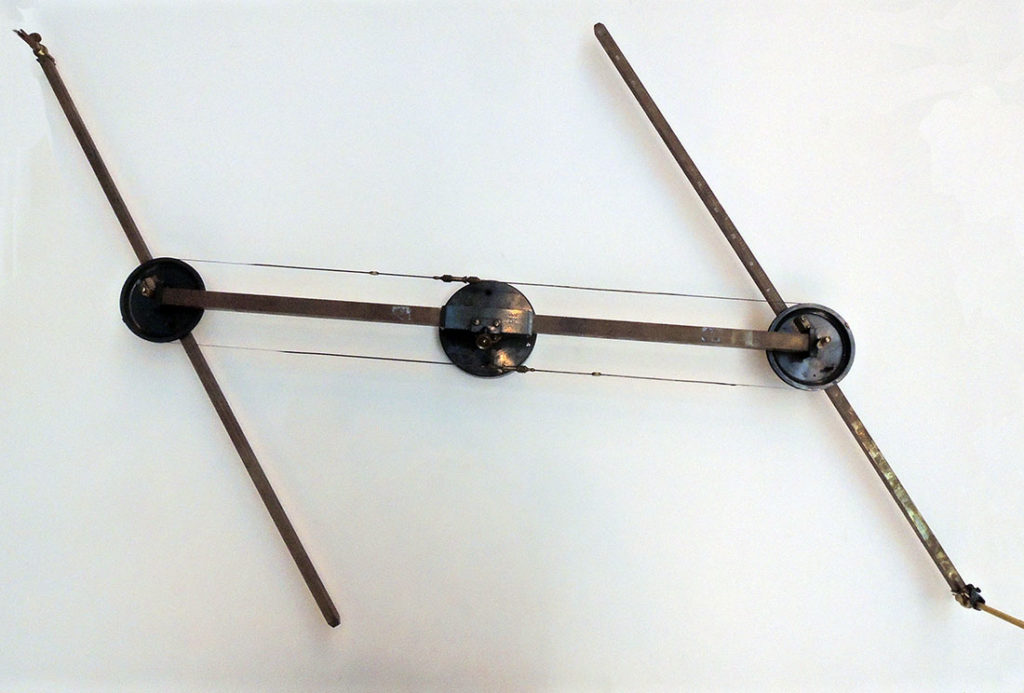
Although a similar instrument can be traced to 1631 and the Jesuit astronomer Christoph Scheiner (1573-1650), we usually credit William Wallace (1768–1843) with the invention of the modern version in the 1820s. Princeton’s model was made by Joseph Casarelli’s Manchester firm, Casartelli & Sons, in the late 19th-century. Ours has a three foot beam calibrated 90-0-90 with vernier scale, locking screw, and cast pulleys connected to the center point by tension cables. Each connects by a similar vernier socket to their respective calibrated adjustable arms fitted with attachments for transposing lines onto paper. Pantograph Gif: http://www.popflock.com/learn?s=Pantograph
Pantograph Gif: http://www.popflock.com/learn?s=Pantograph
The Eidograph came housed in its original fitted mahogany box with its accessories and pasted instructions to the lid as well as a hand-written paper copy. The approximate measurements of the box are 36 x 5 1/2 x 6 1/2 inches (91 x 14 x 17 cm). According to a previous owner, this Eidograph was used in the Surveying Department of Eppleton Colliery, Hetton Le Hole in the Durham Coalfield. A similar example by Casartelli is in the Institution of Civil Engineers Museum Scotland.
As with many inventions, there are disagreements as to who the true inventor of the Eidograph really was and A.D.C. Simpson wrote the whole story in a wonderful article: “An Edinburgh Intrigue: Brewster’s Society of Arts and the Pantograph Dispute,” The Book of the Old Edinburgh Club 1 (1991): 47-73. DA 890.E2 B665 (Here’s a pdf: edinburgh intrigue). Well worth a read even if you will never own or use the instrument.
Eunice Burton Berger’s printing plates and illustrated music
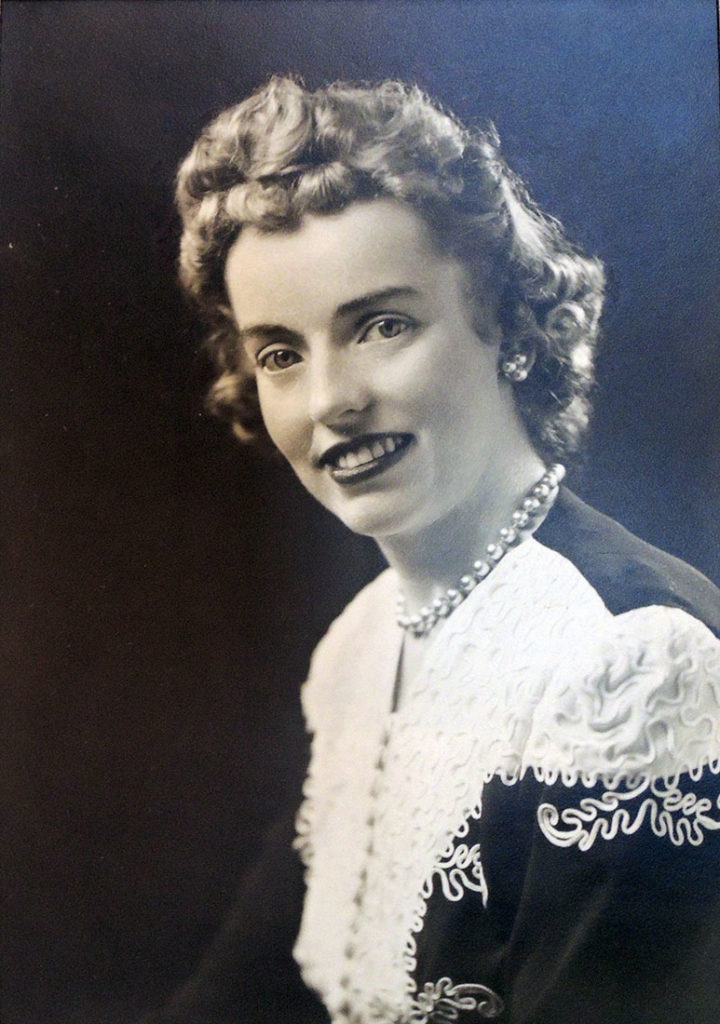 When an author finishes a book or a poem, she sends the text off to a publisher. When a painter finishes an oil painting, it is hung in a gallery so buyers can see and hopefully, buy it. What happens to a composer who writes music for a marching band? How do you print the 35 parts and have them distributed to be copyrighted and played? The Graphic Arts Collection recently acquired a suitcase filled with the printing plates, proof sheets, and published music by Eunice Burton Berger (ca.1888-1966), a Dorchester, Massachusetts musician who did just that. Together with her husband, Louis H. Berger (1879-1965), an engineering and surveying instrument manufacturer, Berger wrote, printed, promoted, and sold her music to radio programs, military bands, and national music companies.
When an author finishes a book or a poem, she sends the text off to a publisher. When a painter finishes an oil painting, it is hung in a gallery so buyers can see and hopefully, buy it. What happens to a composer who writes music for a marching band? How do you print the 35 parts and have them distributed to be copyrighted and played? The Graphic Arts Collection recently acquired a suitcase filled with the printing plates, proof sheets, and published music by Eunice Burton Berger (ca.1888-1966), a Dorchester, Massachusetts musician who did just that. Together with her husband, Louis H. Berger (1879-1965), an engineering and surveying instrument manufacturer, Berger wrote, printed, promoted, and sold her music to radio programs, military bands, and national music companies.
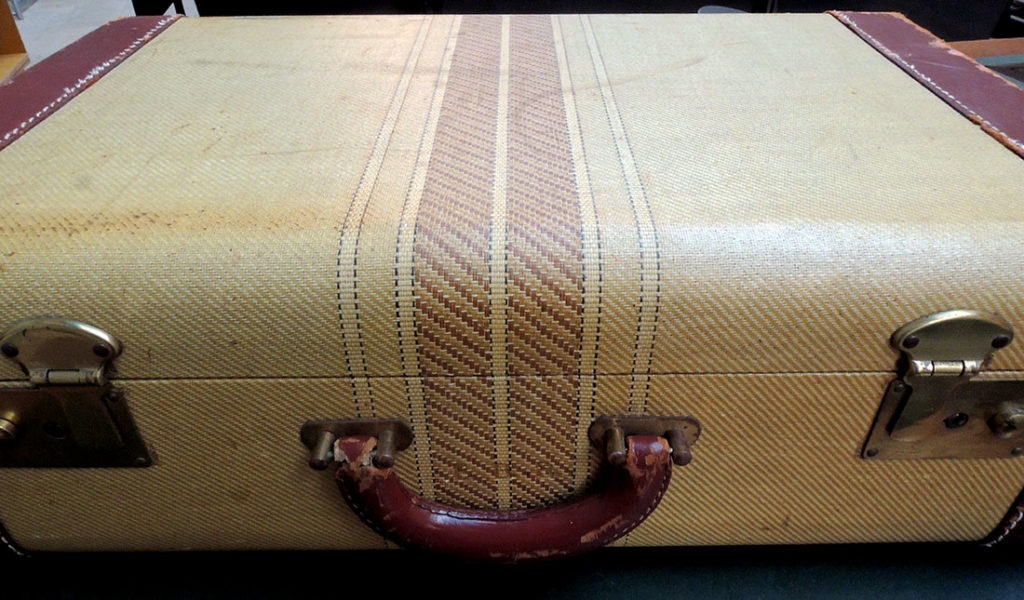 Note the initials, E.B.B. by the handle.
Note the initials, E.B.B. by the handle.
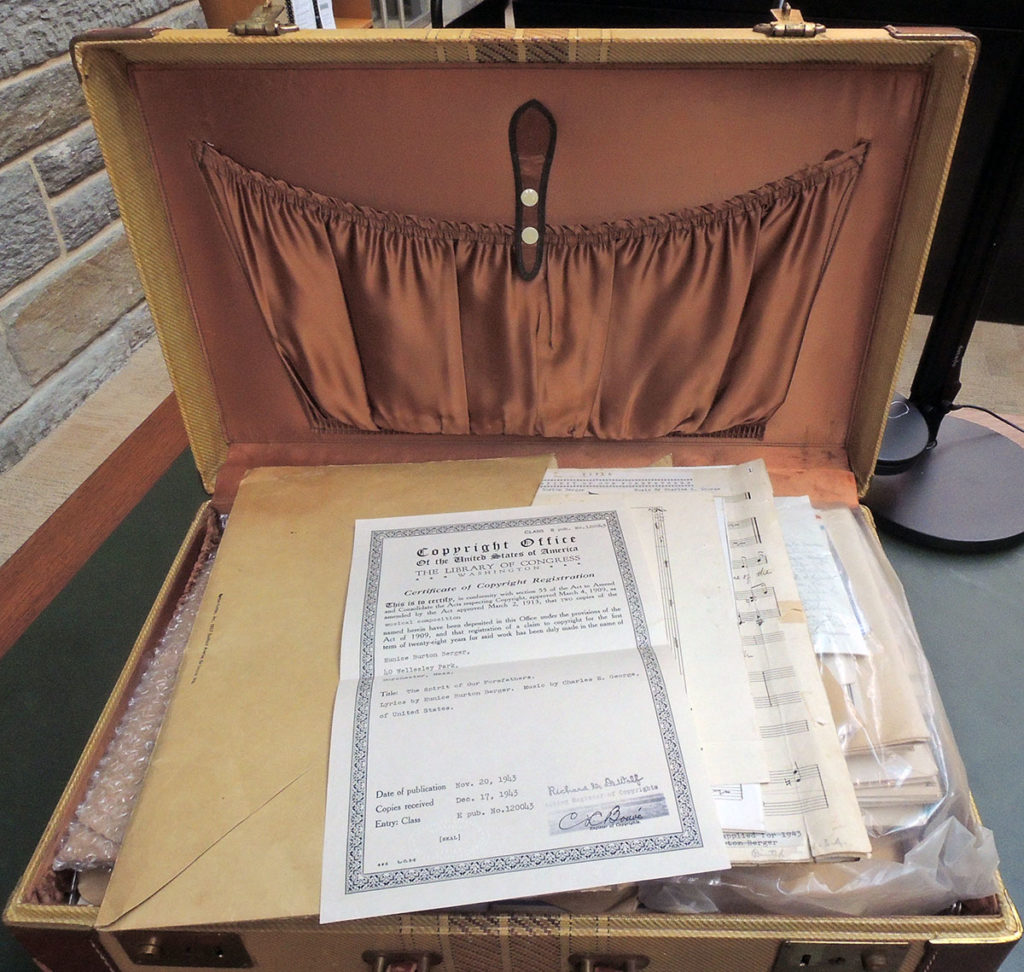
One of many examples of her self-promotion is a reply she received from Harvey S. Firestone Jr., Princeton University class of 1920 (1898-1973) and son of Harvey S. Firestone (1868-1938), in whose memory Princeton University’s Firestone Library is named. In addition to managing the Firestone Tire and Rubber Company, both father and son sponsored The Voice of Firestone (originally called The Firestone Hour), a radio broadcast on NBC Radio beginning on December 3, 1928, featuring classical musicians and popular Broadway stars. The show later became the first series to be simulcast on both radio and television, and Harvey Jr. actively managed both the radio and television programs. [Broadcasts archived https://necmusic.edu/archives/voice-of-firestone] It is unknown whether Berger’s music was ever included in one of the Firestone broadcasts.
It is unknown whether Berger’s music was ever included in one of the Firestone broadcasts.

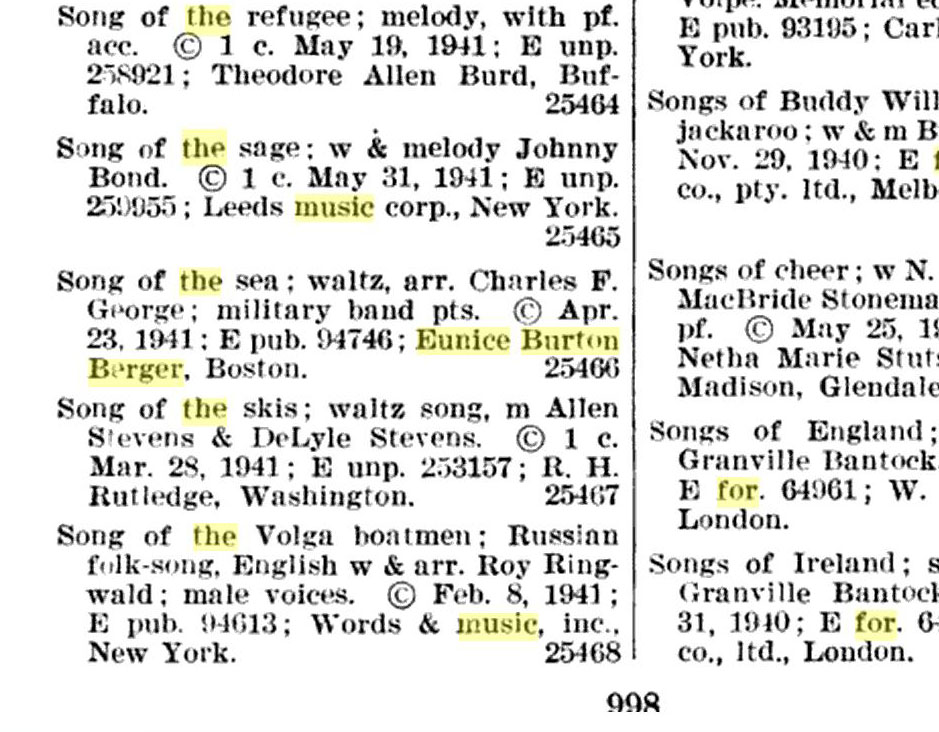
Berger’s compositions include: “On the Brink,” “The Song of the Sea,” “The Spirit of Our Forefathers,” all copyrighted by her between 1939 and 1943, plus “Men of the Sea,” copyrighted in 1960. A few additional poems and partially completed musical scores are also found in her suitcase, along with correspondence between Berger and various members of the branches of the service thanking her for sending her scores. Copyright notices and certificates from the Library of Congress are present for each of her compositions along with paste-ups and proof at each stage of the printing process. There are contracts for royalties and research on the art to be included on the sheet music.
 Engraved metal plates for “The Spirit of our Forefathers” come with instructions to the engraver as to what Berger wanted changed or improved. Although she shared credit with Charles E. George, bandmaster of the Irving Post of the American Legion in Roslindale, Massachusetts, on this and several other songs, it was Mr. and Mrs. Berger who produced sheet music and endlessly promoted the work.
Engraved metal plates for “The Spirit of our Forefathers” come with instructions to the engraver as to what Berger wanted changed or improved. Although she shared credit with Charles E. George, bandmaster of the Irving Post of the American Legion in Roslindale, Massachusetts, on this and several other songs, it was Mr. and Mrs. Berger who produced sheet music and endlessly promoted the work.
The Spirit of Our Forefathers music by Charles E. George and lyrics by Eunice Burton Berger
https://digitalcommons.library.umaine.edu/mmb-vp-copyright/4511/

The 35 marching band parts for “On the Brink,” copyright applied for October 31, 1939, include Berger’s notation additions and printed title laid down at the head of the page. There is a contract dated August 31, 1944, between Eunice Burton Berger and Broadcast Music wherein she gives them exclusive rights to perform “The Song of the Sea” for five years, and they agree to pay her royalties. Along with this are four small brass plaques commemorating relatives lost at sea, possibly the inspiration for several of her song.
The remainder of the material includes a family genealogy by Berger, a number of photographs, and love letters between the dedicated couple. Canadian-born Eunice Burton Berger was married twice, first to Charles Redmond in Canada, and then to Louis H. Berger, a partner in his father C.L. Berger’s firm in Boston, manufacturers of Engineering and Surveying Instruments. The couple lived in the Dorchester section of Boston.
History of the Werner Book Publishers
Washington Fought Here
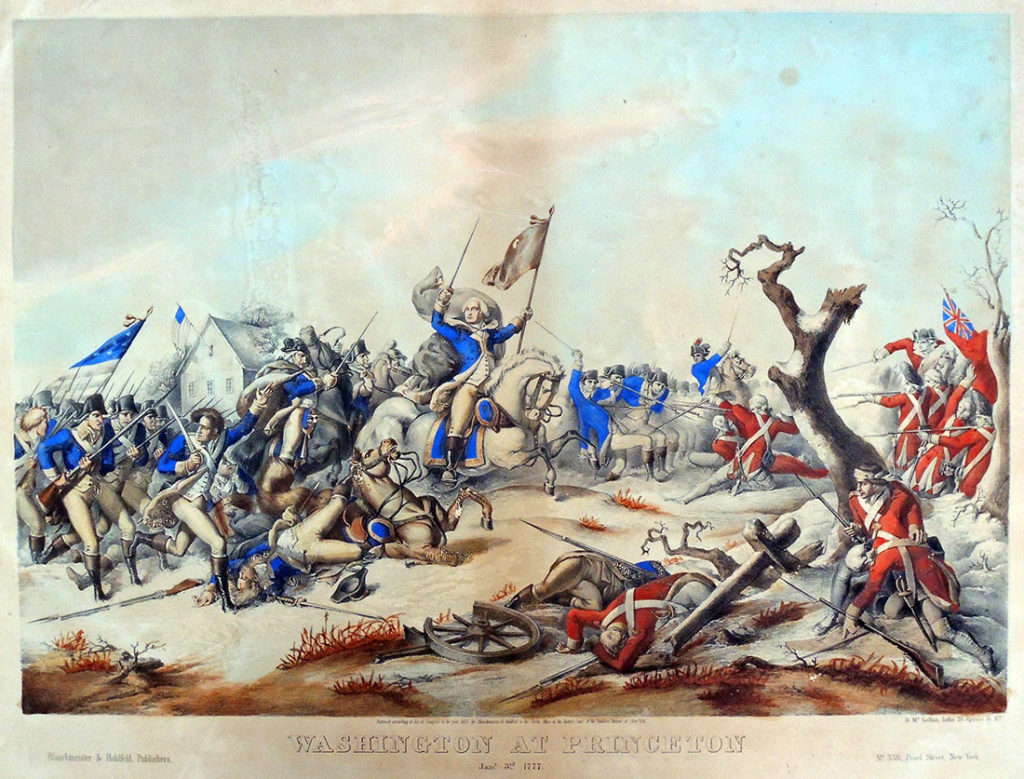 D. McLellan, after a painting by Brückner, Washington at Princeton, Jan. 3, 1777, 1853. Lithograph with hand coloring. “Entered according to act of Congress in the year 1853 by Blanckmeister and Hohlfeld in the Clerk’s office of the District court.” Graphic Arts Collection
D. McLellan, after a painting by Brückner, Washington at Princeton, Jan. 3, 1777, 1853. Lithograph with hand coloring. “Entered according to act of Congress in the year 1853 by Blanckmeister and Hohlfeld in the Clerk’s office of the District court.” Graphic Arts Collection
This fall a group of Princeton students will study the 1777 Battle of Princeton in a class entitled “Battle Lab”. The class description reads,
“Revolution! Espionage! Alexander Hamilton! George Washington! Cannon fire on Nassau Hall! This fall, think outside of the classroom and explore the past in your own backyard: Revolutionary-era Princeton and the physical remains of the legendary battle between American and British forces on January 3, 1777. What happened on that day? Who died? Where are their bones? Why are lawyers fighting over the land? In this new, interdisciplinary course, you will undertake to answer these questions and help solve the longstanding puzzle of the Battle of Princeton. In the process, you will explore how events of the past persistently shape the present day.”
They will also draw on our George Washington collection of lithographs and engravings, as well as the John Trumbull (1756-1843) sketches and watercolors. https://www.princeton.edu/~graphicarts/2011/06/the_death_of_mercer_at_the_bat.html
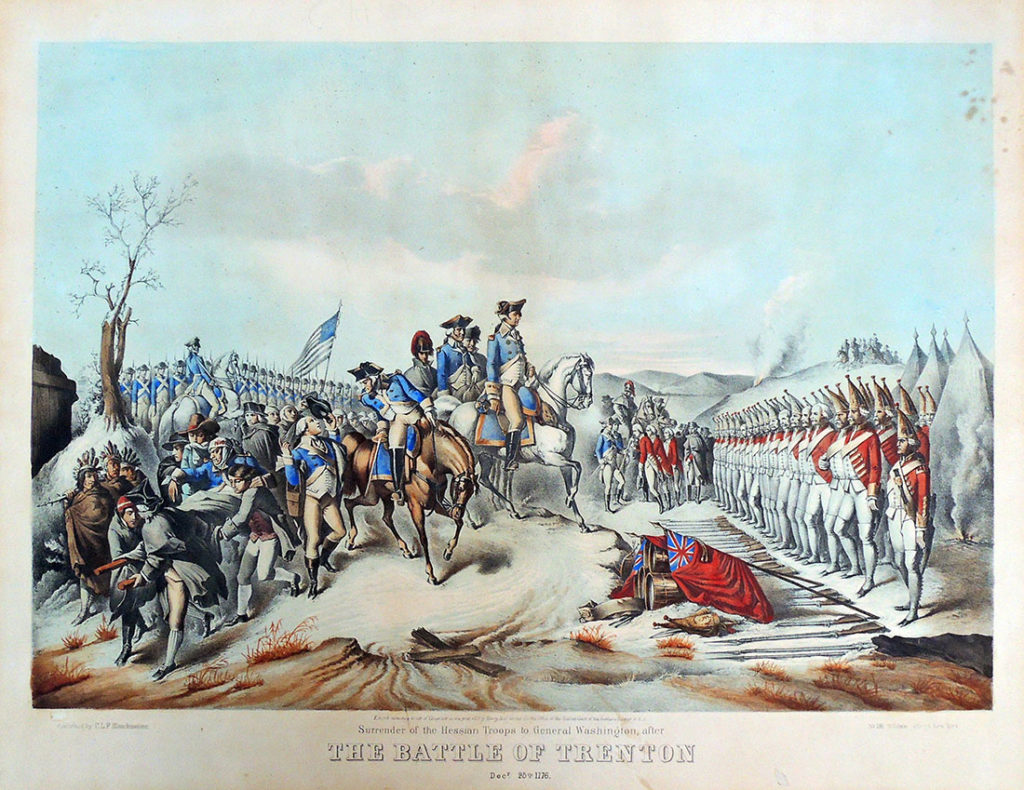 Henry Hoff, Surrender of the Hessian Troops to General Washington, after The Battle of Trenton, 1850. Lithograph with hand coloring. “Entered according to act of Congress in the year 1850 by Henry Hoff in the Clerk’s office of the District court of the Southern District of New York.” Graphic Arts Collection
Henry Hoff, Surrender of the Hessian Troops to General Washington, after The Battle of Trenton, 1850. Lithograph with hand coloring. “Entered according to act of Congress in the year 1850 by Henry Hoff in the Clerk’s office of the District court of the Southern District of New York.” Graphic Arts Collection
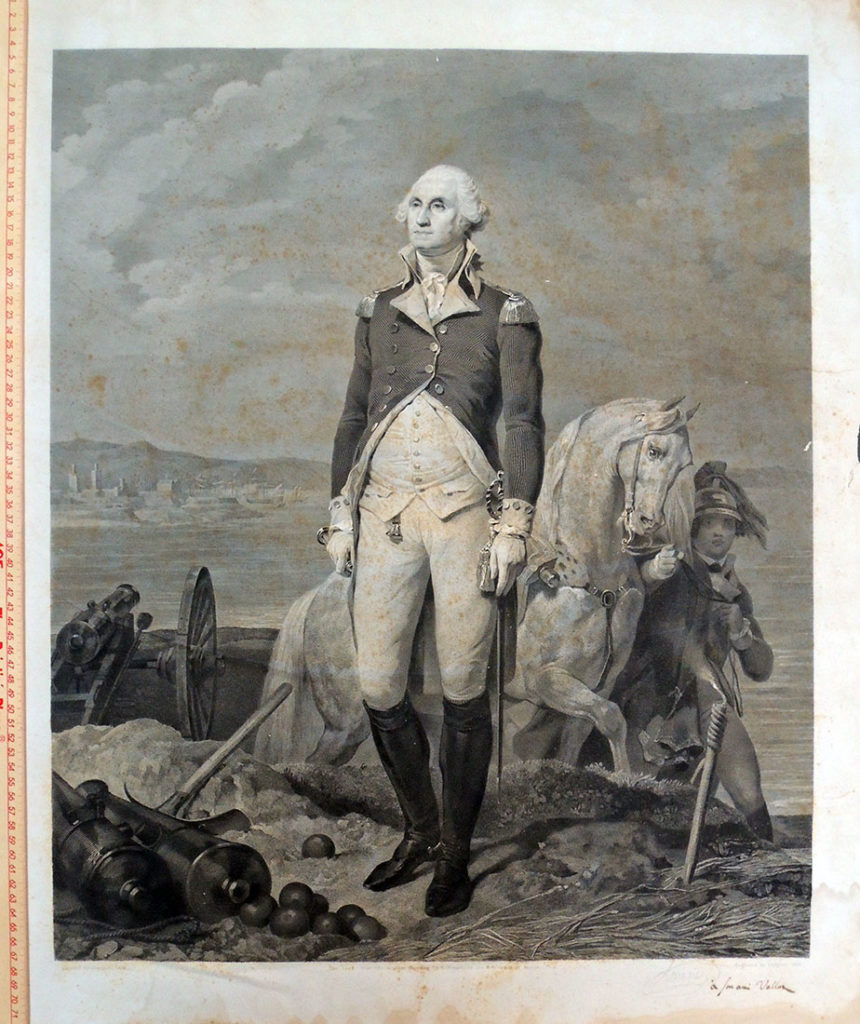 Jean Nicolas Laugier (1785-1875) after a painting by Léon Cogniet (1794-1880), Washington, ca. 1839. Engraving. Graphic Arts Collection.
Jean Nicolas Laugier (1785-1875) after a painting by Léon Cogniet (1794-1880), Washington, ca. 1839. Engraving. Graphic Arts Collection.
 Nathaniel Orr, George Washington vignettes, no date. Wood engraving. Graphic Arts Collection.
Nathaniel Orr, George Washington vignettes, no date. Wood engraving. Graphic Arts Collection.
Henry Hoff, Washington Crossing the Delaware, 1850. Lithograph with hand coloring. “Entered according to act of Congress in the year 1850 by Henry Hoff in the Clerk’s office of the District court of the Southern District of New York.” Graphic Arts Collection
Satirical Pudding
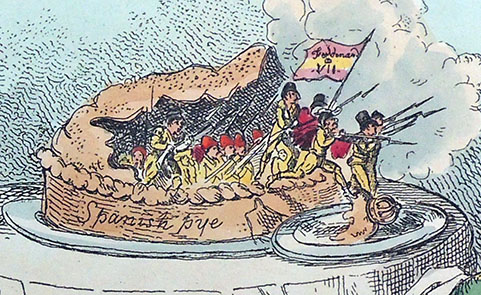 Asked yesterday to find the satirical print with the pudding led to a search. Here are some of the prints that were found.
Asked yesterday to find the satirical print with the pudding led to a search. Here are some of the prints that were found.
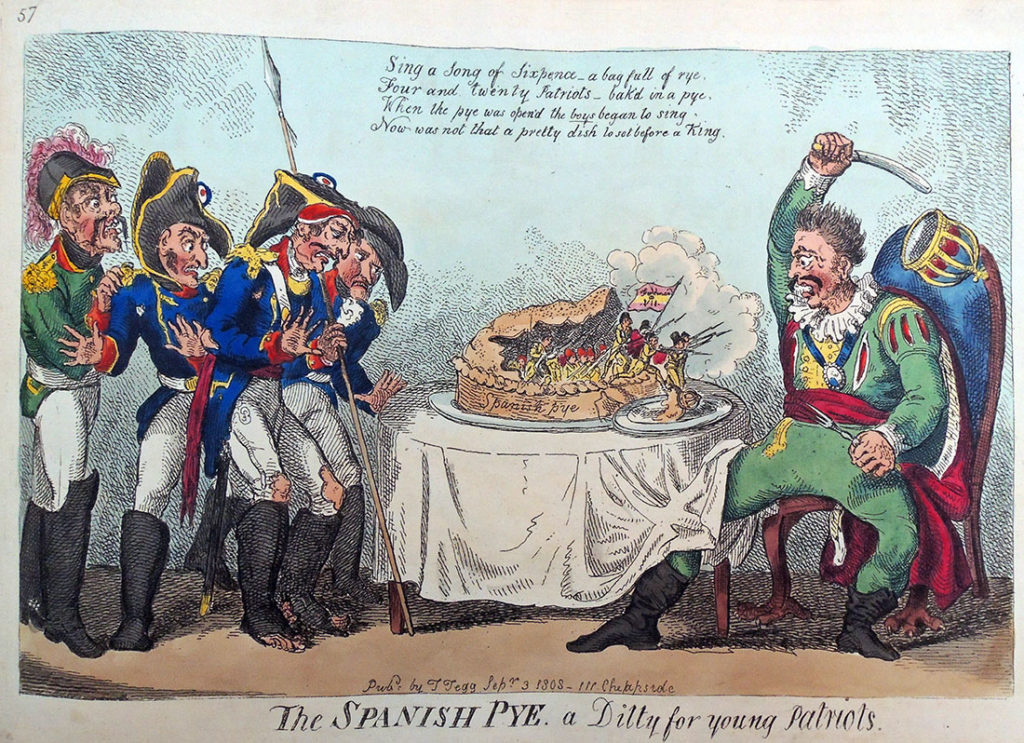 Thomas Rowlandson (1756 or 1757-1827), The Spanish Pye, A Ditty for Young Patriots, September 3, 1808. Hand colored etching. Graphic Arts Collection (GAX) Rowlandson 1807.51f. Gift of Dickson Q. Brown, Class of 1895.
Thomas Rowlandson (1756 or 1757-1827), The Spanish Pye, A Ditty for Young Patriots, September 3, 1808. Hand colored etching. Graphic Arts Collection (GAX) Rowlandson 1807.51f. Gift of Dickson Q. Brown, Class of 1895.
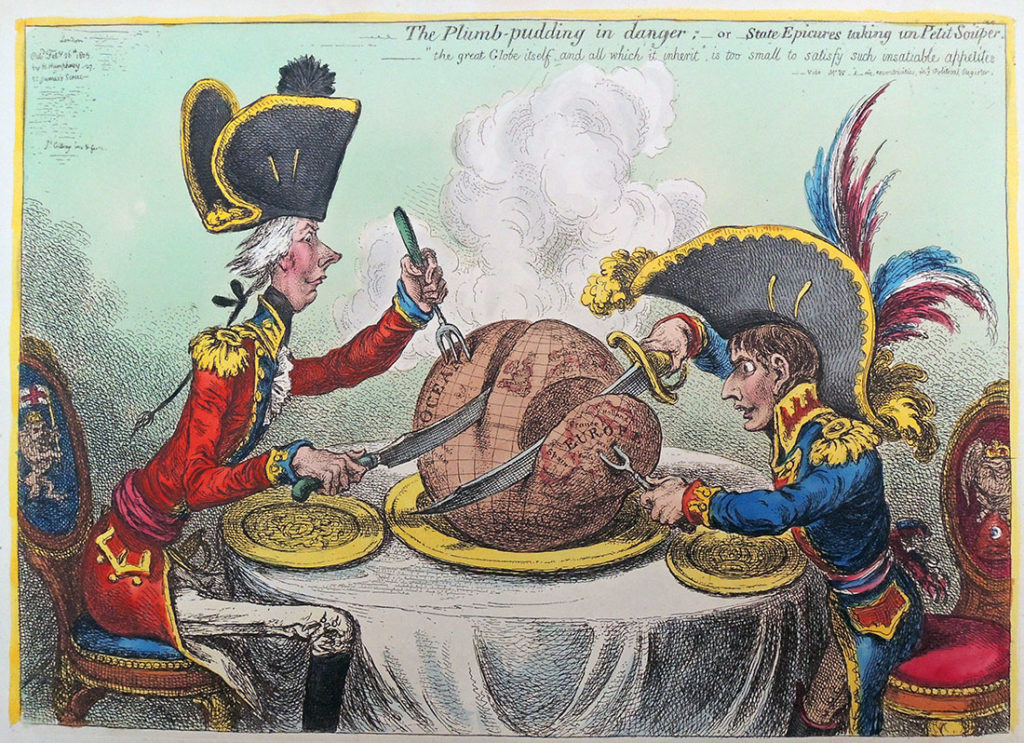 James Gillray (1757-1815), The Plumb-Pudding in Danger-or State Epicures Taking un petit souper, February 26, 1805. Hand colored etching. Graphic Arts collection GA 2006.01303. Gift of Dickson Q. Brown, Class of 1895.
James Gillray (1757-1815), The Plumb-Pudding in Danger-or State Epicures Taking un petit souper, February 26, 1805. Hand colored etching. Graphic Arts collection GA 2006.01303. Gift of Dickson Q. Brown, Class of 1895.
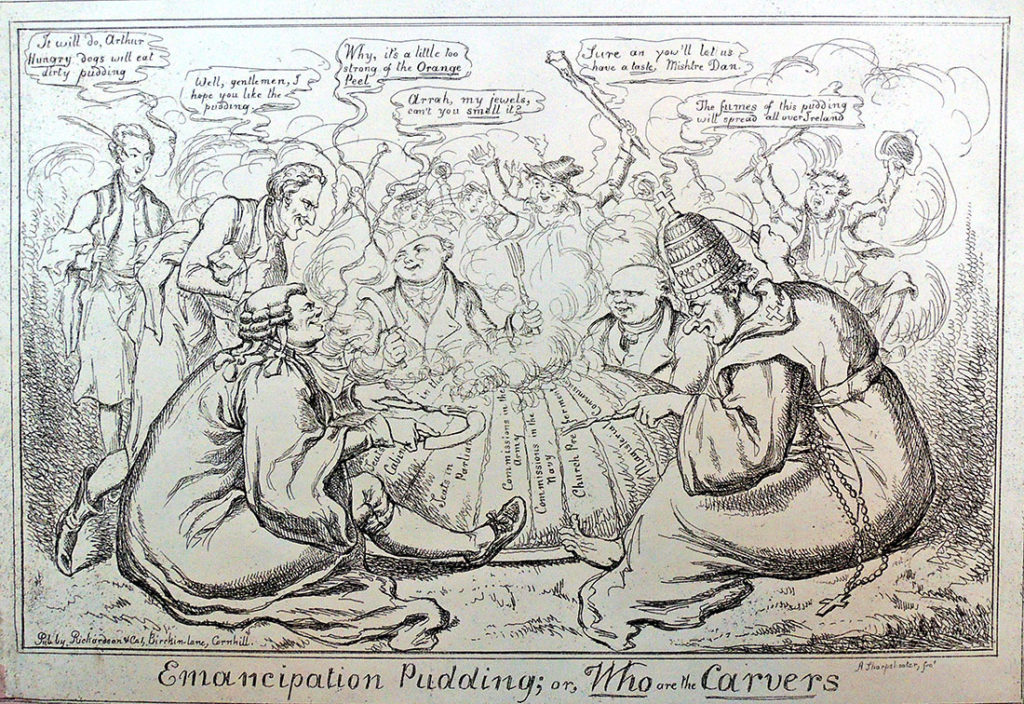 Sharpshooter [John Phillips (active 1840-1852)], Emancipation Pudding; or, Who are the Carvers, March 1829. Etching. Graphic Arts Collection GA 2011.00981. Gift of Dickson Q. Brown, Class of 1895.
Sharpshooter [John Phillips (active 1840-1852)], Emancipation Pudding; or, Who are the Carvers, March 1829. Etching. Graphic Arts Collection GA 2011.00981. Gift of Dickson Q. Brown, Class of 1895.
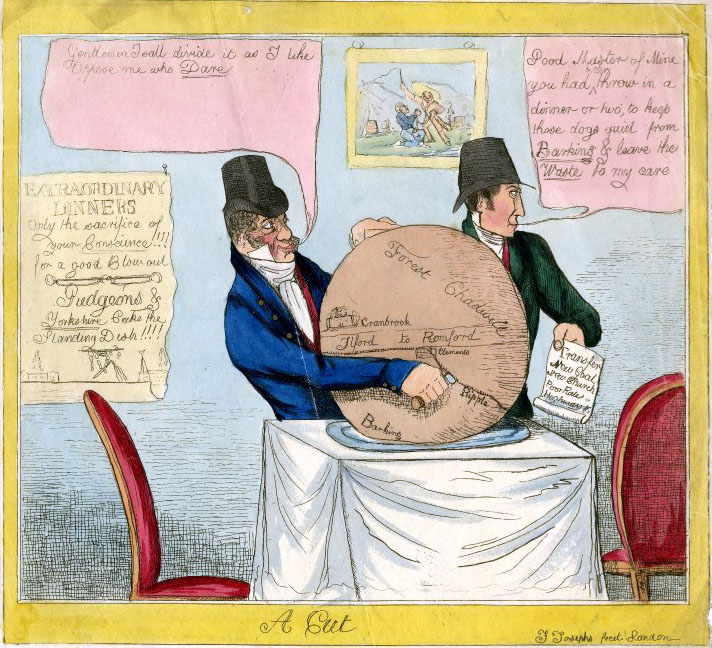 J. Josephs, A Cut, ca. 1818. Hand colored etching. British Museum.
J. Josephs, A Cut, ca. 1818. Hand colored etching. British Museum.
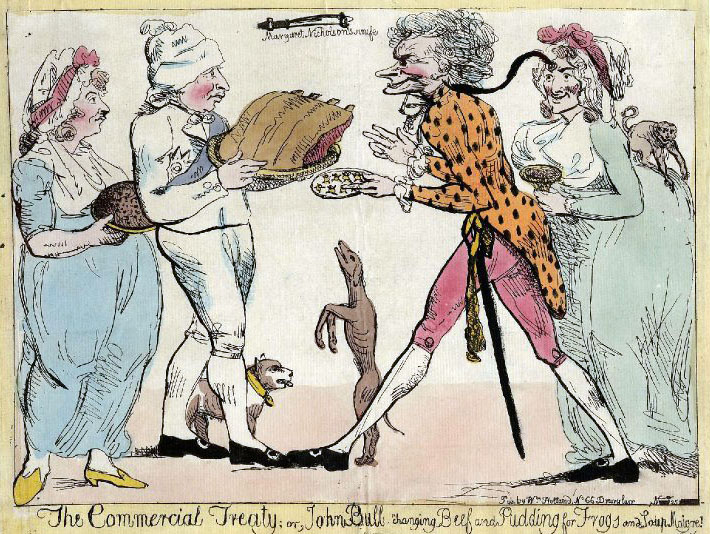 The Commercial Treaty; or John Bull Changing Beef and Pudding for Frogs and Soup Maigre!, November 25, 1786. Hand colored etching. British Museum.
The Commercial Treaty; or John Bull Changing Beef and Pudding for Frogs and Soup Maigre!, November 25, 1786. Hand colored etching. British Museum.
George III, dressed as a cook but wearing a ribbon and star, advances from the left with a large dish of ribs of beef. He is followed by (presumably) Queen Charlotte as a cook-maid carrying a pudding. They meet a grotesquely caricatured Frenchman and Frenchwoman, probably intended for Louis XVI and Marie-Antoinette. The man strides forward holding out a dish of frogs; he is foppishly dressed with a long queue and sword; the woman wears a cap but is dressed in the fashion with very projecting bust and ‘derrière’; on the latter at her back is seated a monkey. She holds a small dish or cup. Beside George III is a stolid English dog; a lean French greyhound stands on his hind legs begging for English beef. In the centre, above and between the two men, is a knife inscribed ‘Margaret Nicholson’s Knife’–British Museum
 Charles Williams, John Bull taking a lunch- or Johnny’s purveyors pampering his appetite with dainties from all parts of the world, November 1, 1798. Hand colored etching. British Museum.
Charles Williams, John Bull taking a lunch- or Johnny’s purveyors pampering his appetite with dainties from all parts of the world, November 1, 1798. Hand colored etching. British Museum.
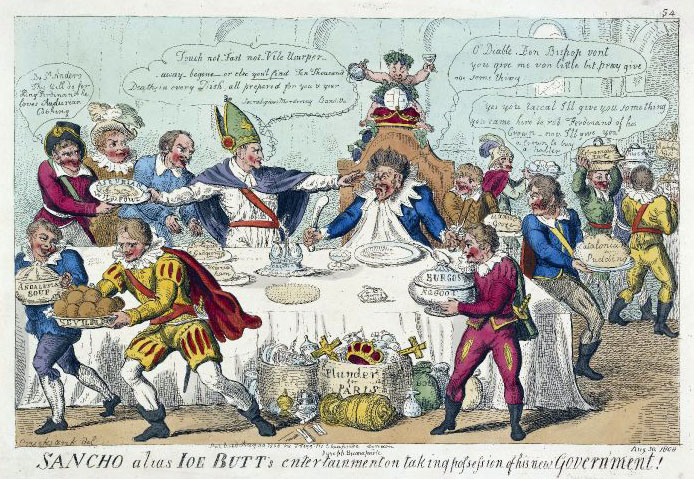 Isaac Cruikshank, Sancho alias Ioe Butt’s entertainment on taking possession of his new government!, August 30, 1808. Hand colored etching. British Museum.
Isaac Cruikshank, Sancho alias Ioe Butt’s entertainment on taking possession of his new government!, August 30, 1808. Hand colored etching. British Museum.

